
Compliance is the essential element that holds together effective business communications.
The act of compliance refers to the process of conforming to set rules, regulations or standards. Rules and regulations are the formal requirements that must be met in order to operate legally. Standards are the accepted ways of doing things that have been agreed upon by those in the know. In a business context, compliance ensures that communication within the organisation meets legal requirements and best practice standards. Compliance is therefore essential to ensure effective business communications.
In a training organisation, compliance is the essential element that holds together effective business communications. By ensuring that all employees comply with the company’s communication policies and procedures, trainers can be confident that messages are being communicated effectively and accurately. So, compliance really boils down to making sure that you are doing things the right way and meeting all of the necessary requirements. That sounds simple enough, but it can be quite complicated in practice.
There are a few key things to keep in mind when trying to ensure compliance in your organisation. First, you need to make sure that everyone is on the same page. That means having clear and concise policies and procedures in place and making sure that everyone understands them.
Second, you need to be proactive about monitoring compliance. You can’t just sit back and hope that everything is being done the right way; you need to put systems in place to check up on things regularly. And finally, you need to take action if there are any problems. If someone isn’t following the rules or standards, they need to be dealt with swiftly and appropriately.
Compliance may not be the most exciting topic, but it is essential for any training organisation.
There are a number of elements that must be considered when planning compliant business communications. These include:
The audience: Who will receive the communication? What are their needs and expectations?
The message: What needs to be communicated? How can this be done in a way that meets legal requirements and best practice standards?
The medium: What is the most appropriate way to deliver the message? This will vary depending on the audience, the message and the desired outcome.
The timing: When is the best time to communicate? This will again vary depending on the audience, the message and the desired outcome.
The documentation: What is the evidence of communication taking place? How this documentation should be maintained effectively?
Effective compliance starts with effective planning. By taking the time to consider all of the elements listed above, you can ensure that your business communications are compliant with relevant regulations and standards. This will help to protect your organisation from potential risks and liabilities and ensure that your messages are delivered effectively to your target audience.
2 years ago
Related News
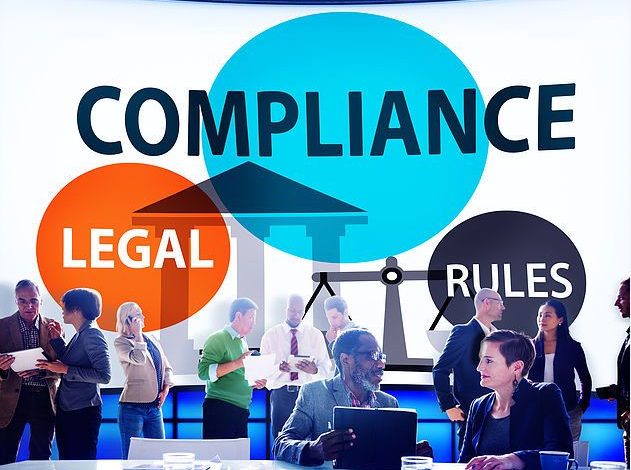
6 October, 2016
The new VET loan scheme to exclude shonky providers?
The new VET loan scheme to exclude shonky providers? From 1 January 2017 VET FEE‑HELP will cease and VET Student Loans will commence. Tougher restrictions on eligible private college courses, loan caps and student engagement requirements are among the changes due to come into force in 2017. The new scheme will have a maximum $15,000 […]
8 years ago

17 November, 2016
VET student loans to support only genuine students
The education minister, Simon Birmingham, has revealed strict new rules for courses and training organisations in the VET student loans program that will penalise colleges with less than 75% pass rates by restricting enrolments. The Department of Education expects the reforms, which begin at the start of next year, to remove about a third of […]
8 years ago

11 May, 2018
Industry Expert reveals lessons learnt from 65+ ASQA Audits
Sukh Sandhu’s Interview conducted by EduTemps During his 20 years in the VET and Higher Education sector, Sukh Sandhu has witnessed a radical shift in compliance landscape. Here he shares his experience on how VET organisations can adapt and thrive in a challenging environment. Few industry professionals have seen the revolution in VET compliance as […]
7 years ago

17 May, 2018
Australian Skills Quality Authority (ASQA) briefings 2018
Do not miss to attend ASQA briefings 2018. ASQA has recently posted the following information regarding their 2018 briefings: Registrations are now open for a range of free face-to-face and online briefings being hosted by the Australian Skills Quality Authority during May and June. ASQA’s Training Provider Briefings will return for a third year and […]
7 years ago

17 May, 2018
VET Industry News 10-May-2018
Updates from the Australian Skills Quality Authority ASQA is increasing scrutiny on new applications for registration from 1 July 2018. Vocational education and training (VET) and the education of overseas students make a significant contribution to Australia’s economy. More than four million people undertake VET qualifications in Australia each year and the quality of the […]
7 years ago

18 May, 2018
What happens when things have not been resolved and you have to take your matter to the Administrative Appeals Tribunal?
The Administrative Appeals Tribunal (AAT) provides an independent review of a wide range of administrative decisions made by the Australian Government (and some non-government bodies). The AAT aims to provide fair, impartial, high quality and prompt review with as little formality and technicality as possible. How do I lodge an application for review? Your application […]
7 years ago

8 June, 2018
VET Industry News 8-Jun-2018
ASQA is increasing scrutiny on new applications for registration from 1 July 2018. Vocational education and training (VET) and the education of overseas students make a significant contribution to Australia’s economy. More than four million people undertake VET qualifications in Australia each year and the quality of the training sector has a direct impact on […]
6 years ago

8 June, 2018
Time to submit your "Quality Indicator data" to ASQA
What are the “Quality Indicators”? RTOs are required to collect and report their performance against the following quality indicators: Learner engagement Employer satisfaction Learner engagement This quality indicator focuses on the extent to which learners engage in activities that are likely to promote high-quality skill outcomes. It includes learner perceptions of the quality of their […]
6 years ago

8 June, 2018
Some tips on how to prepare for a meeting with the regulatory body
How to prepare for an audit or any other meeting with ASQA or their representatives. Collect audit reports, facts and related information: Always collect as much information as possible and discuss your information with an experienced compliance consultant prior to your meeting. Review prior internal / external audits. Consider any new legislation/updates to guidelines etc. […]
6 years ago

8 June, 2018
Record breaking number of overseas students are selecting Australia as their education destination
Figures released recently showed a 12% increase in the number of foreign students in Australia compared to the same period last year, more than 500,000 for the year, according to new government figures. Education Minister Simon Birmingham said Australia has taken in some 510,000 international students from over 190 countries this year. The number of […]
6 years ago

8 June, 2018
Contextualising assessment resources (Part 2)
Contextualisation of training packages, accredited curricula and learning resources can be achieved without compromising the Standards for Registered Training Organisations (RTOs) 2015. Contextualisation is the addition of industry-specific information to tailor the Standards for Registered Training Organisations (RTOs) 2015 to reflect the immediate operating context and thereby increase its relevance for the learner. Contextualisation is […]
6 years ago

12 July, 2018
Reporting obligations for Registered Training Organisations
Under the Standards for Registered Training Organisations 2015, all RTOs are obliged to provide accurate and complete data. All ASQA-registered training organisations RTO must meet mandatory annual data submission requirements, including: Submitting the annual declaration on compliance to ASQA Submitting total VET activity (TVA) data, including the reporting of unique student identifier (USI) data. There […]
6 years ago

12 July, 2018
My Role as Your Trainer (Infographic)
Trainers don’t just train. They listen, they learn, they plan, they adapt, they help, they soothe, they challenge and they tolerate. Students expect all this, and often more besides. But, for a Trainer to be effective at training, they must be very clear about what is most important. Fortress Learning gave it some thought and came […]
6 years ago

12 July, 2018
ASQA News 12-Jul-2018
Definition of Enterprise RTOs updated ASQA has recently updated their guide for the Application of Initial Registration with changes taking effect as of the 1st of July, 2018. You can find this and download for your own reference here:https://www.asqa.gov.au/sites/g/files/net3521/f/application_guide_-_application_for_initial_registration.pdf?v=1525230496 Once of the changes noted, has been to the definition of an Enterprise RTO. ASQA now […]
6 years ago

12 July, 2018
The Difference Between Compliance And Quality Assurance in the RTO space
When you plan to run a registered training organisation (RTO), you may find it difficult to know: the complete regulatory framework and environment your legal obligations and everything else required to run a successful, compliant Registered Training Organisation. Take compliance and quality assurance, for example, you may have heard about them, but do you know […]
6 years ago

7 August, 2018
Reasonable adjustment in summative assessments
The concept of ‘reasonable adjustment’ is important and must be considered. This means that the summative assessment process may be modified so that individual participants are not disadvantaged. For example, a learner with a disability, or with issues relating to language, literacy or numeracy may require some adjustment to the assessment process. In accordance with […]
6 years ago

7 August, 2018
The Difference Between Compliance and Quality Assurance in the RTO space (Part 2)
When we look at the current Standards for Registered Training Organisations 2015, the clauses relevant to Registered Training Organisations’ regulatory compliance, the reporting and governance practice, they all clearly underpin good management practices and effective compliance control procedures—and, as a result, the effective functioning and sustainability of RTOs. These Standards support RTOs to provide high-quality […]
6 years ago

14 August, 2018
ASQA News 14-Aug-2018
ASQA given additional powers to seek civil penalties and issue infringement notices On 12 July 2018, the Governor-General, Sir Peter Cosgrove AK MC made the National Vocational Education and Training Regulator Amendment (Enforcement and Other Measures) Regulations 2018(NVR Regulation Amendment 2018). The NVR Regulation Amendment 2018 allows ASQA to seek civil penalties for breaches of the […]
6 years ago

27 August, 2018
Private students to be included in national student survey
For the first time, the National Centre for Vocational Education Research’s (NCVER), major survey of VET students will include fee-paying students at private colleges. Over coming weeks around 220,000 students will be asked about their recent training experience as part of the Student Outcomes Survey. NCVER Managing Director Dr Craig Fowler said that, to date, […]
6 years ago
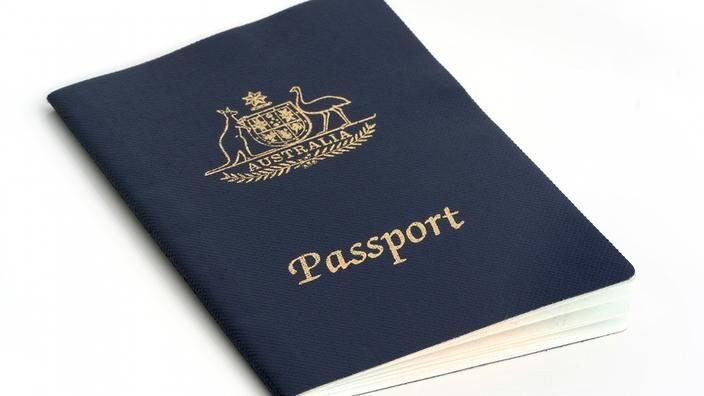
27 August, 2018
The 2016-17 Skilled Occupations List (SOL)
2016-17 Skilled Occupations List (SOL) has been registered on the Federal Register of Legislative Instruments by the Department of Immigration and Border Protection. The review of the SOL was conducted by the Department of Education and Training. The SOL identifies occupations that would benefit from independent skilled migration for the purpose of meeting the medium […]
6 years ago

27 August, 2018
Higher education standards framework (threshold standards) 2015
TEQSA registers and evaluates the performance of higher education providers against the Higher Education Standards Framework, specifically, the Threshold Standards. All providers must meet the Threshold Standards in order to enter and remain within Australia’s higher education system. The Standards are available online. The Higher Education Standards Panel (the Panel) was established to provide independent advice to […]
6 years ago

27 August, 2018
‘Unscrupulous training providers’ to be investigated
The Andrews Labor Government is upping the pressure on rogue training providers with a new investigations unit in the Department of Education and Training to put them under the microscope. Dodgy training courses in Victoria will soon be scrutinised by a new investigation led by a former Victorian Ombudsman investigator. The crack squad, headed by […]
6 years ago

27 August, 2018
Ombudsman for dodgy colleges
Dozens of Victorian education providers will be scrutinised by a new investigation unit looking into dodgy training courses across the state. The new squad, headed by a former Victorian Ombudsman investigator, will conduct detailed investigations into “unscrupulous training providers”, and closely examine the quality of courses on offer. The team is currently focusing on online […]
6 years ago

27 August, 2018
National Strategy for International Education 2025
Australia’s first National Strategy for International Education 2025 sets out a 10-year plan for developing Australia’s role as a global leader in education, training and research. Pillar 1 Strengthening the fundamentals Goal 1: Building on a world-class education, training and research system Goal 2: Delivering the best possible student experience Goal 3: Providing effective quality […]
6 years ago

27 August, 2018
Vocational education and training courses behind significant drop of crime rate.
Vocational education and training courses have been linked to a significant drop in Victoria’s crime rates by University of Melbourne economists. They believe the benefits of the controversial education reforms have been overlooked. “What has been missing is that these reforms did increase access to publicly funded training and that has had positive flow on […]
6 years ago

27 August, 2018
Heavy penalty for bogus qualification
A former trainer has been ordered to pay $120,000 for providing her employer with 11 bogus vocational education and training (VET) qualifications, providing another two bogus qualifications to a co-worker and submitting false qualifications to the national regulator as proof of her competency. The Australian Skills Quality Authority (ASQA) successfully obtained declarations from the Federal […]
6 years ago

27 August, 2018
ASQA Regulatory strategy 2016–17 and ASQA’s Regulatory Risk Framework
ASQA (Australian Skills Quality Authority), VET regulator has recently released its regulatory strategy for 2016-2017. ASQA’s Regulatory Risk Framework, which is part of the published Regulatory Strategy outlines how ASQA fulfils its responsibility by managing risk on two levels: Operational (provider risk), and Strategic (systemic risk) Provider risk continues to be a key focus […]
6 years ago

10 September, 2018
Assessment issues that may impact your RTO audit (Part 1)
It is important to look into ASQAs 2017 report that shows: Around 72% of RTOs FAIL audit on Assessment Approximately 50% of those FAIL to be able to rectify their assessment tools on resubmission under the OLD audit mode According to the new audit model: There may be NO opportunity to rectify critical non-compliances Initial […]
6 years ago

10 September, 2018
Different phases of assessment and learner validation processes (Part 1)
In this article, we will discuss different phases of validation processes that you should be following in your RTO to ensure you meet regulatory requirements and industry expectations. Validation of RTO assessment resources You must validate all your assessment resources to ensure they meet the principles of assessment, rules of evidence, training package requirements, regulatory […]
6 years ago

10 September, 2018
How does quality assurance differ from compliance (Part 3)
In this third and final part of our “compliance and quality assurance,” articles, we are continuing to discuss compliance and quality assurance requirements, standards, expectations and the differences between them. How does quality assurance differ from compliance? It can be overwhelming trying to keep track of all your organisation’s compliance obligations. That’s why many businesses […]
6 years ago

11 September, 2018
VET Industry News 11-Sep-2018
New course accreditation application lodgement fee On 6 July 2018, ASQA introduced an application lodgement fee of $500 for all initial and renewal applications submitted for course accreditation by ASQA. At time of lodgement, a completeness check of the application will be conducted to review: Sufficiency of evidence demonstrating industry support Sufficiency of evidence demonstrating […]
6 years ago

11 September, 2018
Fake universities may have produced bogus lawyers and doctors in UK
More than 30 fake UK universities have been shut down in the past year as concern grows about students being mis-sold fraudulent degrees. The Law Society Gazette reports that 32 fake academic institutions were closed by the government over the past year; 25 of them claimed to be in the UK but were found to […]
6 years ago

11 September, 2018
Current VET sector a disgrace: CEDA
The Committee for Economic Development of Australia (CEDA) is calling for a national review of the VET sector, claiming the area has been “significantly weakened” by recent scandals and a lack of focus from the government. CEDA has put forth a number of recommendations to strengthen the sector, hoping the Council of Australian Governments (COAG) will consider […]
6 years ago
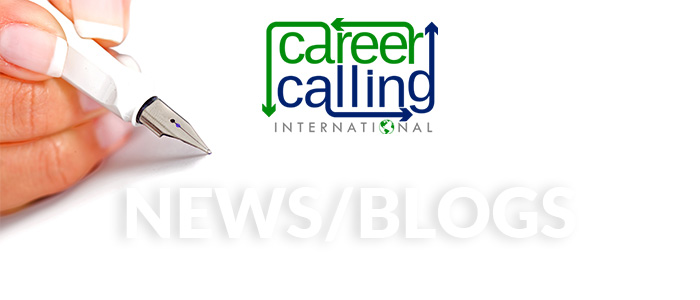
11 September, 2018
CEO Declaration
Annual declaration on compliance Have you submitted your Annual Declaration on Compliance? Are you confident that your RTO meets current compliance requirements with RTO standards? Or do you need help? All Australian Registered Training Organisations (RTOs) are required to submit an annual declaration on compliance with the RTO standards applicable to their organisation on or […]
6 years ago

11 September, 2018
The VET Sector Newsletter – Edition 1, April 2018
The official Newsletter from Compliance and Quality Assurance (CAQA) OUR FIRST NEWSLETTER By Anna Haranas Welcome to The VET Sector, our official newsletter for the Australian VET education and training sector. This monthly publication is an initiative of the team at Compliance And Quality Assurance (CAQA). The newsletter will be a vehicle for news and […]
6 years ago

11 September, 2018
India to be top study destination in two years
The Indian government has promised fee waivers to foreign students choosing India as their study destination as part of a campaign that has a commitment to welcome 1 million inbound students. Following the launch of the Study in India web portal on April 18, which will be a one stop solution for international students, the government has […]
6 years ago

11 September, 2018
Victorian TAFE free-for-all – is it beginning of another “Crisis”?
From January 2019, the Victorian Government will cover the cost of 30 TAFE courses and 18 pre-apprenticeship courses. The free courses run for up to two years and include accounting, agriculture, construction, plumbing, engineering and nursing. The free TAFE courses Non-apprenticeship courses Apprenticeship pathway courses Accounting, Certificate IV/Diploma/Advanced Diploma Automotive Air Conditioning Technology, Certificate II Ageing Support, Certificate IV Automotive Body Repair Technology, Certificate II Agriculture, Certificate II/III/IV […]
6 years ago

11 September, 2018
Contextualising assessment resources (Part 1)
Contextualisation of training packages, accredited curricula and learning resources can be achieved without compromising the Standards for Registered Training Organisations (RTOs) 2015. Contextualisation is the addition of industry-specific information to tailor the Standards for Registered Training Organisations (RTOs) 2015 to reflect the immediate operating context and thereby increase its relevance for the learner. Contextualisation is […]
6 years ago

9 October, 2018
VET Industry News 10-Oct-2018
ASQA Welcomes Convictions for Dodgy Training Providers The national VET regulator has welcomed the conviction of four people who falsified documents. For more Information: visit this link. Updates to the BSB Training Package Updates to the BSB Training Package were released last week and Release 3.0 is now published on the national register of VET, training.gov.au (TGA). […]
6 years ago

9 October, 2018
Getting to know the VET
VET information at your fingertips NCVER’s VET Knowledge Bank is a key source of reference information about Australia’s VET system. Did you know the VET sector is the largest education sector in Australia? Like most countries, Australia’s VET system is complex and ever-changing. Getting to know VET aims to explain the system via a chart of the key components, […]
6 years ago

9 October, 2018
Assessment issues that may impact your RTO audit (Part 2)
This is Part 2 continuing from the previous newsletter. As discussed in Part 1 of this article, there are a number of assessment-related issues that may affect your audit outcome. You should ensure your assessment resources, therefore, meet the following criteria: The context and conditions of assessment. For example, an assessment tool could be developed to cater […]
6 years ago

9 October, 2018
Different phases of assessment and learner validation processes (Part 2)
This is Part 2 of the article, where we are discussing the different phases of the validation processes an RTO should be following to ensure you meet regulatory requirements and industry expectations. In the previous article, we discussed the following regarding the validation of assessment resources: Explanation of assessment validation Typical benchmarks used during the […]
6 years ago

5 November, 2018
CAQA News (5 Nov 2018)
We are introducing a new section in CAQA News. This section will cover news and information regarding what is happening at CAQA/Career Calling headquarters. Information Technology resources The following resources are now available for purchase. The assessment and learner resources have been developed by subject matter experts from the industry. All resources have been checked […]
6 years ago

5 November, 2018
Private training colleges face too much scrutiny, says ACPET
Excessive scrutiny of detailed regulatory issues by the national skills regulator is forcing private colleges into legalistic compliance, according to the Australian Council for Private Education and Training (ACPET). ACPET has called for a review of the quality standards for VET following the latest annual report of the Australian Skills Quality Authority. Independent RTOs were […]
6 years ago

5 November, 2018
Your trainer and assessor files (Part 1 of 5)
Compliance of your trainer records is a must for any Registered Training Organisation. If you do not know what you are looking for, you will always have difficulty finding it. The purpose of this article is to provide you with the required information and resources to ensure you can audit and review your trainer and […]
6 years ago

5 November, 2018
Internal audits and why they are important (Part 1 of 5)
This is our first article in the series regarding “Internal audits”. Our main intention is to provide you with the required knowledge and skills, and equip you with the necessary resources to ensure you can audit your organisation against quality frameworks and standards effectively and efficiently. What are Internal audits? Internal audits are an […]
6 years ago

5 November, 2018
Different phases of assessment and learner validation processes (Part 3 of 4)
This is Part 3 of the article, where we are discussing the different phases of the validation processes an RTO should be following to ensure they meet regulatory requirements and industry expectations. In the previous articles, we discussed the following regarding the validation of assessment resources: Explanation of assessment validation Typical benchmarks used during the […]
6 years ago

5 November, 2018
Why keep in touch with what is happening in the VET sector
Information is power. The more you read, the more you understand the world around you. The VET world is evolving at a lightning speed and is changing the way we all used to do things. Continuous learning in the VET sector is a must. Why should you keep in touch with the VET updates Because […]
6 years ago

7 December, 2018
Why do you enjoy working in the VET Sector?
We asked this question to some of our RTO colleagues, to know what worked for them, how they are contributing positively to the VET sector, and we have captured their responses: Dr Bryan West is founder and manager of Fortress Learning, RTO. 31974. Fortress Learning has from its early days emphasised robust delivery of training […]
6 years ago

12 March, 2019
The VET Sector News – December 2019
Poorer and regional Australian students lag behind richer peers, report finds Poorer Australian students are 18 months behind their better-off peers at school, a report by Deloitte has found. And regional students were on average eight months behind at school. If academic results could be improved by 50% for poorer and Aboriginal students, the economy […]
6 years ago

18 March, 2019
Internal audits and why they are important (Part 2 of 5)
In the first part of this series we discussed the following: What are internal audits? What are the benefits of conducting internal audits? What is an audit scope? What is usually included in an RTO internal audit? Who can be an internal auditor? In this part, we will cover the following areas: Compliance costs and […]
6 years ago

21 March, 2019
Do I need to upgrade to TAE40116 Certificate IV in Training and Assessment before 1 April 2019?
A number of questions trainers and assessors are at the moment asking if they need to upgrade to the latest TAE40116 Certificate IV in Training and Assessment on or before 31 March 2019. You might find this article helpful if you also have questions regarding this matter. Q1: What are the legislative and regulatory requirements […]
6 years ago

21 March, 2019
Different phases of assessment and learner validation processes (Part 4 of 4)
This is Part 4 of the article, where we are discussing the different phases of the validation processes an RTO should be following to ensure they meet regulatory requirements and industry expectations. In the previous articles, we discussed the following regarding the validation of assessment resources: Explanation of assessment validation Typical benchmarks used during the […]
6 years ago

10 April, 2019
Internal audits and why they are so important (Part 3 of 5)
In part 1 & 2 of this series we discussed the following: What are internal audits? What are the benefits of conducting internal audits? What is an audit scope? What is usually included in an RTO internal audit? Who can be an internal auditor? Compliance costs and risks in terms of “risk management” The effective […]
6 years ago

10 April, 2019
Your trainer and assessor files (Part 2 of 5)
In the last newsletter (published in November 2018) we discussed the following: Legislative and regulatory requirements Requirements for all trainers and assessors Trainer CVs In part 2 of the series, we will discuss the vocational competency requirements. The quality of your training and assessment is dependent on the skills and knowledge of your trainers and […]
6 years ago

11 April, 2019
CAQA New Resources (11 Apr 2019)
New Information Technology resources The following resources are now available for purchase. The assessment and learner resources have been developed by subject matter experts from the industry. All resources have been checked by external validators to ensure they comply with training package requirements and industry expectations. ICT10115 Certificate I in Information, Digital Media and Technology […]
6 years ago

11 April, 2019
Can I sue ASQA for damages?
Published with written permission from the author. Reference: Zhouand, Z. (2019, April 09). Can I sue ASQA for damages? Retrieved April 09, 2019, from https://www.linkedin.com/pulse/can-i-sue-asqa-damages-zmarak-zhouand/ In the current environment, an increasing number of people feel that they and their Registered Training Organisations (RTOs) have suffered loss and damage due to what they believe are wrongful acts […]
6 years ago

11 April, 2019
VET Industry News 11-Apr-2019
Strengthening Skills: Expert Review of Australia’s Vocational Education and Training System On 28 November 2018, the Prime Minister announced an independent review of Australia’s vocational education and training (VET) sector to examine ways to deliver skilled workers for a stronger economy. The review was led by the Honourable Steven Joyce, a former New Zealand Minister […]
6 years ago

6 May, 2019
CAQA New Resources (06 May 2019)
Compliance products from Compliance and Quality Assurance (CAQA) The following compliance products are available: Policies and Procedures for an RTO Policies and Procedures for a CRICOS RTO Policies and Procedures for an ERTO RTO forms and flow charts RTO student handbook (pre-enrolment and post-enrolment) RTO staff handbook RTO compliance registers Training and assessment strategies Internal […]
6 years ago

6 May, 2019
VET Industry News 06-May-2019
A plan for stronger Australia The Business Council of Australia has released a plan for stronger Australia. Click here for more information The Independent Sector Offers Better Outcomes At A Lower Cost – ACPET The independent Vocational Education and Training (VET) sector is highly efficient. Domestically, it costs the government $2,400 per student trained by independent […]
6 years ago

6 May, 2019
Ways to make the vocational education system more effective
The review led by the Honourable Steven Joyce, the former Skills Minister in New Zealand, looked at ways to improve the effectiveness of the vocational education system in providing Australians with the skills they need throughout their working lives. The report is available at https://pmc.gov.au/sites/default/files/publications/strengthening-skills-independent-review-australia-vets.pdf. Considering 192 valid submissions from individuals and organisations, the VET Review […]
6 years ago

6 May, 2019
Internal audits and why they are so important (Part 4 of 5)
In the first three parts of this series we discussed the following: What are internal audits? What are the benefits of conducting internal audits? What is an audit scope? What is usually included in an RTO internal audit? Who can be an internal auditor? Compliance costs and risks in terms of “risk management” The effective […]
6 years ago

6 May, 2019
Your trainer and assessor files (Part 3 of 5)
In the last newsletter we discussed the following: The definition of vocational competency ASQA Guidelines on “vocational competence” The three C’s of Vocational competency related to demonstrating skills and knowledge in an “industry area” Skills and knowledge in an “industry area” In this part of the series, we will discuss industry currency, vocational education and […]
6 years ago

7 May, 2019
How to avoid becoming another ASQA statistic
There are currently 3837 RTOs in Australia, down from over 4,400 RTOs in October last year. If your ASQA audit is scheduled in the next 12 months we would strongly recommend that you conduct an internal audit to identify your compliance risks, The best way to prepare for an ASQA audit is to have an […]
6 years ago

28 May, 2019
VET Industry News 28-May-2019
28th National Vocational Education and Training Research Conference ‘No Frills’ 28th National Vocational Education and Training Research Conference ‘No Frills’: 10-12 July 2019 NCVER and co-hosts TAFE SA are delighted to invite you to Adelaide this July for #NoFrills2019. Presenters and delegates from across Australia and around the world will come together to explore the […]
5 years ago

28 May, 2019
First aid training under review after the death of a footballer from heat stress
The Australian Skills Quality Authority (ASQA) urged registered training organisations (RTOs) that give first aid training to revise their practices in the wake of the decision of the West Australian coroner on the death of a young soccer player. The coroner found that the 15-year-old died after heat stroke during a rugby-league session. He received […]
5 years ago

28 May, 2019
The Quality Indicator data
The Quality Indicators provide valuable data for RTOs to identify areas for improvement in training and assessment services and to gauge how well it is meeting its clients’ needs. The Quality Indicator data that is collected will also be used by the registering body in its monitoring of the quality of the RTOs’ operations to […]
5 years ago

28 May, 2019
ELICOS for the International Students (Part 1 of Part 3)
‘ELICOS’ stands for ‘English Language Intensive Courses for Overseas Students’. ELICOS programs are designed for students who require English language training before starting their formal studies in Australia. These programs are open to all, including people who are in Australia on a tourist or visitor’s visa and people who do not want to do any […]
5 years ago

28 May, 2019
Internal audits and why they are so important (Part 5 of 5)
In the first four parts of this series we discussed the following: What are internal audits? What are the benefits of conducting internal audits? What is an audit scope? What is usually included in an RTO internal audit? Who can be an internal auditor? Compliance costs and risks in terms of “risk management.” The effective […]
5 years ago

28 May, 2019
Your trainer and assessor files (Part 4 of 5)
In the last newsletter, we discussed the following: ASQA Guidelines on “industry currency.” How to stay up to date in terms of “industry currency.” Factors that influence “industry currency.” What is “industry current or currency period.” The definition of vocational education and training currency. Licensing requirements for trainers and assessors. In part 4 of the […]
5 years ago

28 May, 2019
Four Corners focus on Australian Universities including Murdoch U, Swinburne University and The University of Tasmania
Four Corners focus on Australian Universities including Murdoch U, Swinburne University and The University of Tasmania International students are a significant source of revenue and are major purchasers of Australian education services. The number of international fee-paying students enrolled in Australian universities in 1987 was 667. In 2007, there were 177 760, with 56 176 […]
5 years ago

3 July, 2019
CAQA Resources introducing version 10.0!
At CAQA resources we are busy updating our resources to be able to provide you the most up to date and current resources available on the market. This is an extensive process and we are committed to bringing you resources that are compliant. Our resources have been extensively validated by a number of industry experts […]
5 years ago

4 July, 2019
The VET Sector News
Annual Registration Charge – Due July 30th 2019 ASQA will issue RTOs with an invoice for their annual registration charge. RTOs must pay the charge within 30 days of ASQA issuing the invoice. The annual charge recovers some of the costs ASQA incurs when conducting activities necessary for effective regulation of the vocational education and […]
5 years ago

4 July, 2019
Introducing Career Calling Jobs!
Recruitment in Vocational Education and Training Australia wide! Career Calling Jobs specialise in RTO Recruitment, assisting Registered Training Organisations to find the right staff for their business. We are dedicated to providing a quality service to both employers and candidates to ensure the outcome is a long lasting successful one. Benefits for employers: Advertising, […]
5 years ago

4 July, 2019
CAQA New Resources
New Information Technology resources The following resources are now available for purchase. The assessment and learner resources have been developed by subject matter experts from industry. All resources have been checked by external validators to ensure they comply with training package requirements and industry expectations. ICT10115 – Certificate I in Information, Digital Media and Technology […]
5 years ago

4 July, 2019
Student-centred principles for educational providers with overseas students
In this article, we are discussing the top 10 student-centred principles that every educational provider must implement for the welfare and support of International students. Educational provider must develop a thorough and well-planned risk management plan, framework according to The Australian and New Zealand Risk Management Standard AS/NZS 4360:2004 and regulatory standards and requirements. Quality […]
5 years ago

4 July, 2019
ELICOS for the International Students (Part 2 of Part 3)
In the last newsletter we discussed the following: What is ELICOS and what it stands for Who ELICOS applies to? What is the definition of ELICOS? What is included in the ELICOS? What are the benefits of having ELICOS programs on scope Guidelines for regulatory authorities What are ELICOS providers and their types? The status […]
5 years ago

4 July, 2019
Internal audits and why they are so important (Part 5 of 5)
In the first five parts of this series we discussed the following: What are internal audits? What are the benefits of conducting internal audits? What is an audit scope? What is usually included in an RTO internal audit? Who can be an internal auditor? Compliance costs and risks in terms of “risk management” The effective […]
5 years ago

4 July, 2019
Your trainer and assessor files (Part 5 of 5)
In the last newsletter we discussed the following: The definition of a “trainer matrix” ASQA Guidelines on “trainer matrix” What must be included in a “trainer matrix” Who must complete the skills matrix in your RTO? The trainer file and checklist In part 5 of the series, we will discuss common errors and non-compliance identified […]
5 years ago

4 July, 2019
Quality RTO Resources
List of Training Training Packages ICT – Information and Communications Technology The following resources are now available for purchase. The assessment and learner resources have been developed by subject matter experts from industry. All resources have been checked by external validators to ensure they comply with training package requirements and industry expectations. ICT10115 Certificate I […]
5 years ago

14 August, 2019
The VET regulator Australian Skills Quality Authority (ASQA) gone rogue
The national vocational education and training (VET) sector regulator Australian Skills Quality Authority (ASQA), has been criticised by the Chair of the House of Representatives Employment, Education and Training Committee, Andrew Laming, LNP (QLD) Member for Bowman in a hard-hitting speech to parliament. According to the Independent Tertiary Education Council Australia (ITECA), the peak body […]
5 years ago

14 August, 2019
What should the vocational education and training regulatory system look like?
Our belief is that a regulatory system should be based on the following principles: Transparency: All audit reports should be made public on ASQA’s website. This will help establish a transparent vocational education and training system. Consistency: ASQA should only make decisions within the regulatory framework. There also needs to be a definition of what constitutes a […]
5 years ago

14 August, 2019
How does an RTO protect itself in this current climate?
RTO’s need to be prepared to weather any storm. There are simple practices all RTO’s should be adhering to to ensure they are ready for whatever comes their way. As an RTO the first step is ensuring that you understand the applicable legislation, standards and what best practice looks like. For the VET sector these […]
5 years ago

14 August, 2019
Third-Party Arrangements – What does this mean for your RTO?
ASQA has published an updated guide on third-party arrangements that will come into effect from 1 September 2019 for new third-party arrangements and 1 November 2019 for existing arrangements. If you have an existing third-party arrangement, you should have already received an email from ASQA with information about the new requirements and the transition period. […]
5 years ago

14 August, 2019
ELICOS for the International Students (Part 3 of Part 3)
In the last newsletters we discussed the following: What is ELICOS and what it stands for Who ELICOS applies to? What is the definition of ELICOS? What is included in the ELICOS? What are the benefits of having ELICOS programs on scope Guidelines for regulatory authorities What are ELICOS providers and their types? The status […]
5 years ago

15 August, 2019
INTERVIEW: Dianne Dayhew CEO, National Apprentice Employment Network
Dianne, in a nutshell, what has been your experience of working in the training and education industry? I have worked in training, education and employment since the mid-1990s. I have seen many ministers, governments and policies come and go, great initiatives start, gain traction, and disappear. One thing about vocational education and training is that […]
5 years ago

20 August, 2019
Experiences from the front line
We believe the purpose of a regulatory body is to promote and protect the education and training system. Australia has a world-class education and training system that other countries envy, but the real-life stories below also raise questions. RTO One’s Experience: This is a very common scenario in a number of stories we have received: […]
5 years ago

20 August, 2019
New projects under way
Training package and/or product consultation – August 2019 Automotive PWC Skills for Australia invite you to complete their online survey for the AUR Automotive training package and materials. Take the AUR survey First Aid SkillsIQ is leading a project to review of the current UoCs in the first aid training package to reflect industry best […]
5 years ago
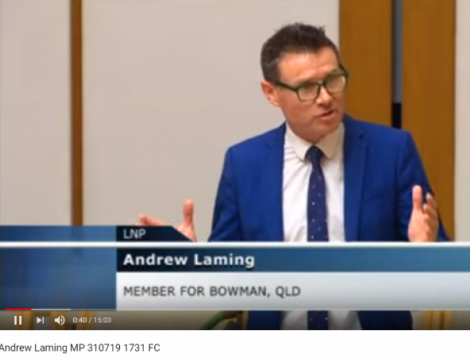
20 August, 2019
The man who stood up for the vocational education and training sector – Mr Andrew Laming MP
We can see the after effects of MP Andrew Laming’s speech in parliament. Many people have started talking about the vocational education and training sector, and the processes and procedures of the current regulator. His video that we have shared last week has received over 9,300 views, 1600 likes and 5 dislikes.The video is available […]
5 years ago

21 August, 2019
Interview: Troy Williams, Chief Executive Officer at the Independent Tertiary Education Council Australia (ITECA).
Here is a copy of our interview with Troy Williams, Chief Executive Officer at the Independent Tertiary Education Council Australia (ITECA). Troy, in a nutshell, what has been your experience of working in the training and education industry? It’s diverse. From the perspective of a provider, in the late 1990s I established a Registered Training […]
5 years ago

21 August, 2019
ASQA’s Regulatory Strategy 2019–21
Highlights: The strategy identifies two target areas and five strategic initiatives Target area 1: Trainer and assessor capability, identified as a critical concern for the VET Sector in three consecutive years (2016-17, 2017-18 and 2018 -2020) Target area 2: VET in Schools Strategic Initiative 1: Recognising and supporting quality in the VET sector Strategic Initiative […]
5 years ago

10 September, 2019
Australia has a tech explosion, but there is a lack of workers and facilities
Australian workers could make thousands of dollars more every year by leaving their current work and reskilling in the technology sector, a new study has disclosed. Australia will have an extra 100,000 technology jobs in five years time, as the digital sector ramps up its contribution to economic growth. But local IT graduates and skilled […]
5 years ago

10 September, 2019
Interview: Tamara Simon: Australia’s Only Dedicated RTO Business Coach from ‘Take Another Look’.
Here is a copy of our interview with Tamara Simon – Australia’s Only Dedicated RTO Business Coach. Bio Tamara Simon is the Australia’s Only Dedicated RTO Business Coach who knows the key to RTO success lies in your Business Strategy, People Performance and Systems Simplification. Tamara has taken countless RTO CEOs, RTO Managers and RTO […]
5 years ago

10 September, 2019
Private registered training organisations vs Public providers
Please note: We have a number of TAFE and Government providers as our clients, and the reason for publishing this article is not to damage them or their reputation. All facts mentioned in this article are facts that have been established through reports. The main aim is to look into why the regulatory body is […]
5 years ago

10 September, 2019
VET & Higher Education –Two Pillars Of One Tertiary System
With the Australian Government’s recent and welcome focus on Vocational Education and Training (VET), some stakeholders have seen this as a pitch against the value of the higher education system. When the Prime Minister said “VET is as good as uni” he was simply saying what is self-evident, that for different people, for different employers […]
5 years ago

10 September, 2019
VET Delivery to Secondary School Students
Vocational Training offers learners the chance to gain the required knowledge and skills to work effectively in the workplace and be part of the workforce. Vocational education and training (VET) provide this opportunity through industry-developed training packages or accredited courses while learners are still studying at school. These courses are usually delivered in years 10, […]
5 years ago

10 September, 2019
VET accredited course leads the way
There are two different kinds of training products delivered by registered training organisations (RTOs) within the VET industry: training packages and VET accredited courses. According to the Australian Skills Quality Authority (ASQA): “A VET accredited course has been assessed by ASQA as compliant with the Standards for VET Accredited Courses 2012 and the Australian Qualifications […]
5 years ago

10 September, 2019
No Regulation or Bad Regulation – has ASQA failed as a VET Regulator?
We are starting this article by quoting the now very famous speech of MP Laming in the Australian Parliament: I rise after a nationwide investigation into the performance of ASQA … This is not just a domestic issue; this is about brand Australia … This aggressive and adversarial conduct is an enormous concern”. The […]
5 years ago

10 September, 2019
The VET Sector News – September 2019
ASQA’s Sample AQF documentation gets updated to meet the requirements of third-party arrangements The ASQA Fact Sheet Sample AQF documentation has been updated for a clarification in light of recent Third Party arrangements guidance. https://www.asqa.gov.au/news-publications/publications/fact-sheets/sample-aqf-documentation The fact sheet now states “Only the name of the issuing organisation (your RTO) can be included on testamurs/statements of […]
5 years ago

18 September, 2019
Conducting validation in your training organisation
What is validation? Explanation: Checking that the assessment tools, methods, judgement, evidence and processes to ensure that the training product meets: Principles of Assessment – i.e. valid, reliable, flexible and fair Rules of Evidence – i.e. valid, authentic, current and sufficient The judgment made by the trainer/assessor is benchmarked* with colleagues or industry experts There […]
5 years ago

18 September, 2019
Unpacking ASQA audit reports and files (Part 1)
Let’s look into what is actually going on in the audits and ASQA practices. We are referring here a number of examples from the audits conducted and the matters discussed in the Administrative Appeals Tribunal by the Australian Skills Quality Authority. 1. ASQA Auditor considering online documents on a Google drive as “Student Portal” and […]
5 years ago

18 September, 2019
The VET Sector News
Integration is the key to the future – TROY WILLIAMS Australia needs an integrated tertiary education system in which higher education plus vocational education and training operate as one but they retain their separate identities. The rationale is strong. Those entering the workforce today are likely to have three or four careers before they retire, […]
5 years ago

18 September, 2019
New ESOS Regulations for CRICOS-registered providers
The Education Services for Overseas Students Regulations 2019 (ESOS Regulations) commence on 1 October 2019. They replace the current 2001 regulations. The ESOS Regulations commence on 1 October 2019. Registered providers must comply with the ESOS Regulations from 1 October 2019, including by giving information in the Provider Registration and International Student Management System (PRISMS). […]
5 years ago

18 September, 2019
Interview with The VET Gurus – John Price, Angela McGregor, Kerri Butter
Response from John Price regarding VET Sector Newsletter. John Price John started his career in education and training over 40 years ago. He was the Head of the School of Printing and Graphic Arts, became a TAFE Queensland Professional Development Coordinator and mentored many new TAFE teachers through their Diploma in Technical and Further Education. He […]
5 years ago

18 September, 2019
Australian Government’s new Deregulation Task Force announced
COAG agreed to work together to reduce regulatory and bureaucratic barriers across the federation so that businesses can grow and create more jobs. Leaders committed to improving the design and efficiency of business regulation to support jobs and investment in the interests of the community. The Commonwealth’s Deregulation Task Force will work with state, territory […]
5 years ago

18 September, 2019
The biggest threat to the education and training sector in Australia is bad regulation!
It is very important to evaluate the training and auditing systems to find out what is working and what is not. If true monitoring and evaluation is not happening, it will be really difficult to identify gaps in the system. Irrespective of the type of organisation (public or private), it should be independently audited at-least […]
5 years ago

1 October, 2019
VET ministers announce changes to the Australian Skills Quality Authority
Sharing the most recent announcement from the Senator the Hon Michaelia Cash, Minister for Employment, Skills, Small and Family Business and The Hon Steve Irons MP, Assistant Minister for Vocational Education, Training and Apprenticeships. The Australian Government today announced reforms to the agency responsible for regulating the vocational education and training sector, the Australian […]
5 years ago

1 October, 2019
Communiqué for the COAG Skills Council Meeting (20 September 2019)
In the last COAG Skills Council Meeting in Melbourne on 20 September 2019 all federal, state and territory skills ministers unanimously agreed that the Australian Skills Quality Authority (ASQA), Australia’s national VET regulator, should “improve its engagement with the VET sector” and expand its role in helping to educate training providers. The inaugural meeting of […]
5 years ago

1 October, 2019
A 19-member panel Industry VET Stakeholder Committee working to deal with the VET challenges
The Morrison Government has established its Vocational Education and Training (VET) Stakeholder committee to help drive its significant agenda of reform. Scott Morrison has flagged that VET reforms are a key reform agenda priority and is working to deal with the challenges outlined in the Joyce review that declared confidence in the sector was declining, […]
5 years ago

1 October, 2019
A potential audit of the Australian Skills Quality Authority by the Australian National Audit Office (ANAO)
The Australian National Audit Office is the national auditor for the Parliament of Australia and the Government of Australia. It reports directly to the Australian Parliament via the Speaker of the House of Representatives and the President of the Senate. ANAO has scheduled a potential “performance audit” of Australian Skills Quality Authority (ASQA) for its […]
5 years ago

1 October, 2019
RTO experiences with ASQA from the front line-Part 2
We are continuing to share the RTO experiences from the front line with the current regulatory body of vocational education and training, Australian Skills Quality Authority (ASQA). 1. Completely unjust and untrue grounds used by Australian Skills Quality Authority (ASQA) for RTO rejection 2. No exit meeting with the RTO, no information regarding where […]
5 years ago

1 October, 2019
How will ASQA move from its current practices?
Pic: Courtesy @edissuesaus Note: The pic includes the famous saying of Ex-Chief Commissioner, Australian Skills Quality Authority in the Independent Tertiary Education Conference, Itec 2019 that held on 21-23 August 2019 at Marriott Surfers Paradise, for more information, please refer https://itec19.com.au/program/program/ Yes, you heard it right. The chief commissioner of Australian Skills Quality Authority (ASQA) has […]
5 years ago

1 October, 2019
The major issues with current legislative and regulatory standards (Part 1)
We are starting a series of articles discussing what is broken or can be improved in the current legislative and regulatory standards. We will also talk about how there should be no room for ambiguity and a very clear understanding in terms of what is expected from the training organisations. Our first target is the […]
5 years ago

1 October, 2019
The implications of ASQA being moving to a full cost recovery agency
ASQA and TEQSA are required by the Australian Government to transition from partial cost recovery to full cost recovery by 2020-21 making charging activities more consistent with the other areas of Government and Australian Government Charging Framework. Currently, neither regulator recovers the full cost of their regulatory operation or the full cost of legislative activities. […]
5 years ago

1 October, 2019
Unpacking ASQA audit reports and files (Part 3)
Let’s look into what is actually going on in the audits and ASQA practices. This is part 3 of the ongoing series. We are referring here a number of cases from the different audits conducted by the Australian Skills Quality Authority (ASQA). 1. ASQA officers justifying their statements using information that contradicts all documented and […]
5 years ago

1 October, 2019
The VET Sector News
India is reforming education for the first time since 1986 – here’s why Australia should care India released a Draft National Education Policy (DNEP) in June 2019. It’s the first comprehensive policy proposal on education in the country since 1986 and a major, game-changing statement. Australia has a moral duty to engage with the global […]
5 years ago

18 November, 2019
Unpacking ASQA audit reports and files (Part 4)
This is part 4 of a series. We are referring here to cases from different audits conducted by the Australian Skills Quality Authority (ASQA). 1. Units made compliant, qualifications become non-compliant ASQA making decisions, where individual units were made compliant but qualifications including the very same units were made non-compliant. When we read auditor’s response […]
5 years ago

18 November, 2019
Updates to USI transcript for closed registered training organisations
Australian Skills Quality Authority (ASQA) published the following news on October 4 2019: As part of a collaboration between the Australian Department of Education, ASQA and the National Centre for Vocational Education Research (NCVER), ASQA is now able to upload the academic results from closed RTOs to students’ Unique Student Identifier (USI) transcripts outside the […]
5 years ago

18 November, 2019
Beware of FAKE certificates and unregistered providers
ASQA published the following media release on October 4 2019: ASQA is aware that unfortunately, there are unqualified organisations issuing fake certificates in the Vocational Education and Training (VET) sector. Whether you are a student signing up for a course in VET or a business seeking a training provider for your employees, make sure to […]
5 years ago

18 November, 2019
The Australian Government is investing $41.7 million to pilot Skills Organisations in human services care and digital technology (including cyber security) industries
The Department of Employment, Skills, Small and Family Business has published the following media release: The Australian Government is investing $41.7 million to pilot Skills Organisations in two key industries; human services care and digital technology (including cyber security). The Skills Organisations Pilots will drive innovative ‘end-to-end’ training solutions and enhance the role and leadership […]
5 years ago

18 November, 2019
ASQA has changed the rules for purchase and sale of RTO’s
Australian Skills Quality Authority has made it crystal clear that “Registered training organisations (RTOs) and Commonwealth Register of Institutions and Courses for Overseas Students (CRICOS) providers are not permitted to transfer their registration from one legal entity to another. However, where a change of company shareholdings occurs, but the ABN/ACN of the entity registered with […]
5 years ago

18 November, 2019
Who is there to support training organisations and what RTO representatives should know. (Part 1)
In this article, we will discuss the issues registered training organisations are experiencing in their day-to-day operations. You have the following help available: RTO consultants Extend your own understanding and get an unbiased evaluation of your training and assessment from a consultant who can evaluate your practices and give you feedback. Contact a few and […]
5 years ago

18 November, 2019
Review of Australian Qualifications Framework (Part 1)
The AQF review, chaired by Victoria University tertiary education professor Peter Noonan, recommended a shake -up of Australia’s qualification system. Under the recommended changes senior secondary students would also be able to study subjects at school that would count towards a vocational training qualification or university degree. The new changes will enable students to mix […]
5 years ago

18 November, 2019
I want to voice my opinion – your letters and emails to us
In this newsletter, we have selected this email received from one of our subscribers genuinely questioning the current regulatory environment of Registered Training Organisations: “It has been my experience as an RTO Manager that everyone except the RTO is protected in the current environment. Students and staff can complain to ASQA and Smart and Skilled […]
5 years ago

18 November, 2019
Financial Viability Risk Assessment (FVRA) tool has changed again, version 3.1.
The financial viability risk assessment (FVRA) tool has been changed again by ASQA to make it more user friendly. The latest change was implemented on October 4, 2019. The changes have been made to make the FVRA tool more user-friendly and in cases where it is incomplete, provide additional guidance to identify items missing. The […]
5 years ago

18 November, 2019
Industry consultation form released to assist development of VET accredited courses
ASQA has released a tool to assist in the development of VET accredited courses. The following media released has been published by Australian Skills Quality Authority: The Standards for VET Accredited Courses 2012 require a course developer to provide: evidence of an industry need and supporting evidence that industry consultation and validation of course content […]
5 years ago

18 November, 2019
Concerns about the competency levels of Australian Skills Quality Authority (ASQA) officers and auditors
The VET industry has some serious concerns regarding the competency of ASQA’s officers and auditors. We would like to look into this with some facts, records and figures. Qualified auditors with Senior VET Experience – are they qualified enough? Unfortunately, the regulatory body has moved away from recruiting officers with a background in the education […]
5 years ago

18 November, 2019
Is natural justice or procedural fairness possible with the current set up of ASQA?
We have evaluated how fair and transparent the internal workings of Australian Skills Quality Authority (ASQA) is. Where can an RTO go to complain and seek justice? How effective are the “external avenues”? ASQA’s auditors on the day of the audit Please note: ASQA has engaged some very professional officers and auditors as well and […]
5 years ago

18 November, 2019
Where are we going and why are we here?
If you have followed the recent discussion on social media ASQA’s practices, RTO closures, TAFE non-compliance, rorting of government funding (by now this is historical data being republished) it is one thing that stands out; students are not part of the discussion. How did we arrive where we are at this point in time? ASQA […]
5 years ago
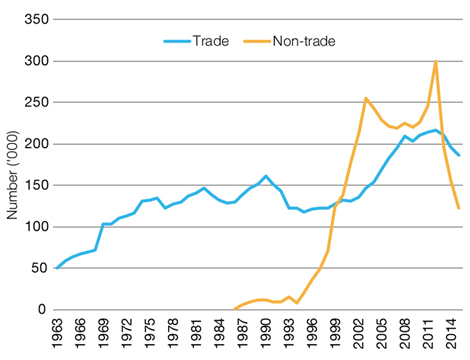
3 December, 2019
The drop in traineeships and apprenticeships. Why is it happening?
A recent figures revealed that the federal government over the last five years has underspent close to $1 billion of its budget on TAFE, training and apprenticeships. This is on top of previous cuts. At the same time, that these budgets cuts are happening, Australia is still experiencing critical skills shortages in several industries. A […]
5 years ago
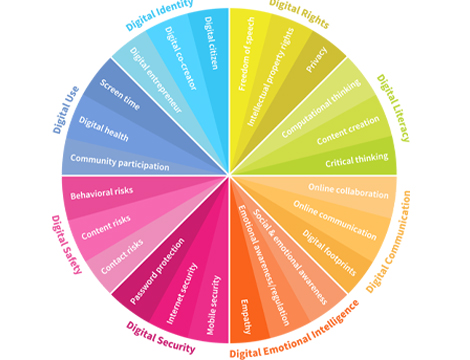
3 December, 2019
Has the Australian Skills Quality Authority taken Australia back 30 years?
The effects of the VET regulator’s actions on our industry and Australia’s reputation with regards to innovative learning has been detrimental to what is internationally seen as best practice. The attitude towards learning methods that are applied outside traditional face-to face classroom based training have put our education system at risk. We are not reaching […]
5 years ago

3 December, 2019
Victims of ASQA: The Real stories (Part – 1)
In this section we explore stories of how a regulatory body is destroying Australia’s education and training sector, the livelihood of people and causing immense stress and loss to the individuals working in the training organisations. Our first guest in this series is Brett Hilder. Brett Hilder is a businessman with extensive experience drawn from […]
5 years ago

3 December, 2019
ASQA’s slash and burn approach on Registered Training Organisations
An approach that is not very well thought out can cause significant knee jerk reactions. This is exactly what we all are experiencing from ASQA. The poor implementation and monitoring of VET FEE-HELP scheme and the way a few private and public organisations took advantage and rorted the funding is still causing significant nightmares […]
5 years ago

4 December, 2019
Communiqué for the COAG Skills Council Meeting – 22 November 2019
The Council of Australian Governments (COAG) Skills Council (the Council) held its second meeting today in Brisbane to agree on an ambitious approach to enhancing vocational education and training (VET). Council congratulated the winners and finalists recognised at the Australian Training Awards on their outstanding achievements. The winners and finalists offer a shining example of […]
5 years ago

4 December, 2019
2019 Australian Training Awards winners announced
The Australian Training Awards are the peak national awards for the VET sector recognising individuals, businesses and registered training organisations for their contribution to skilling Australia. On 21 November the awards were presented and the winners are: Lifetime Achievement Award — Wayne Collyer Wayne Collyer was Managing Director at Polytechnic West (now South Metropolitan TAFE) […]
5 years ago

17 December, 2019
The rapid review of ASQA announced by Senator the Hon Michaelia Cash, Minister for Employment, Skills, Small and Family Business
A rapid review of the Australian Skills Quality Authority (ASQA) has been announced. We are sharing the details of the review with this article. Two recent national reviews have focused on the VET sector, including the role of ASQA – the 2019 Expert Review of Australia’s VET System (the Joyce Review), and the 2018 review […]
5 years ago

17 December, 2019
VET International Engagement Strategy 2025 launched
The Morrison Government has reaffirmed its commitment to ensure Australian VET sector continues to play a significant role in contributing to the development of a highly skilled workforce by lodging Vocational Education and Training International Engagement Strategy 2025. Australia’s first National Strategy for International Education 2025 enables Australia’s international education sector to be more innovative, […]
5 years ago

17 December, 2019
Satisfaction with vocational education and training remains high
New data from over 170 000 vocational education and training (VET) students shows that satisfaction with VET remains high, according to a new report by the National Centre for Vocational Education Research (NCVER). The annual National Student Outcomes Survey is Australia’s largest survey of VET students and provides information on employment outcomes and training satisfaction […]
5 years ago

17 December, 2019
The VET Sector News II – December 2019
Apprentice and trainee commencements down in June 2019 quarter The latest release of national apprentice and trainee data show commencements were down 3.3% to 33 295 in the June 2019 quarter, when compared with the same quarter in 2018. Apprentices and trainees 2019 — June quarter, published by the National Centre for Vocational Education Research […]
5 years ago

17 December, 2019
I want to voice my opinion – Your letters and emails to us
In this newsletter, we are selecting this email that we received from one of our subscribers genuinely questioning the current regulatory environment on the Registered Training Organisations: Thank you for your ongoing support of the VET Sector and in particular your reporting on the actions of ASQA. I have worked in the VET industry for […]
5 years ago

18 February, 2020
These are the 15 most in-demand skills in Australia right now, according to LinkedIn
https://www.vetsector.com/post/these-are-the-15-most-in-demand-skills-in-australia-right-now-according-to-linkedin
5 years ago

18 February, 2020
Australian visas exploited by “criminal people smuggling syndicates”
https://www.vetsector.com/post/australian-visas-exploited-by-criminal-people-smuggling-syndicates
5 years ago

18 February, 2020
The new ASQA website
https://www.vetsector.com/post/the-new-asqa-website
5 years ago

18 February, 2020
Five things RTOs need to know in 2020
https://www.vetsector.com/post/five-things-rtos-need-to-know-in-2020
5 years ago

18 February, 2020
Coronavirus advice for RTOs
https://www.vetsector.com/post/coronavirus-advice-for-rtos
5 years ago

18 February, 2020
VET Student Loan Caps Lifted
https://www.vetsector.com/post/vet-student-loan-caps-lifted
5 years ago

18 February, 2020
Mitchell Institute releases new report and sounds VET funding alarm
https://www.vetsector.com/post/mitchell-institute-releases-new-report-and-sounds-vet-funding-alarm
5 years ago

18 February, 2020
Vocational education and training
https://www.vetsector.com/post/vocational-education-and-training
5 years ago

18 February, 2020
Singapore’s first undergraduate health degree in speech and language therapy
https://www.vetsector.com/post/singapore-s-first-undergraduate-health-degree-in-speech-and-language-therapy
5 years ago

18 February, 2020
Malaysian university seeks partner for short-term study abroad program in Australia
https://www.vetsector.com/post/malaysian-university-seeks-partner-for-short-term-study-abroad-program-in-australia
5 years ago

18 February, 2020
Report on Government Services 2020
https://www.vetsector.com/post/report-on-government-services-2020
5 years ago

18 February, 2020
ACT has highest student participation and employment
https://www.vetsector.com/post/act-has-highest-student-participation-and-employment
5 years ago

18 February, 2020
SA Govt invests in vocational education and training
https://www.vetsector.com/post/sa-govt-invests-in-vocational-education-and-training
5 years ago

18 February, 2020
Coronavirus travel ban sees Chinese students miss start of university, Australia’s tertiary…
https://www.vetsector.com/post/coronavirus-travel-ban-sees-chinese-students-miss-start-of-university-australia-s-tertiary
5 years ago

20 February, 2020
The VET Sector News- February 2020
Coronavirus travel ban sees Chinese students miss start of university, Australia’s tertiary education sector scrambling More than 100,000 Chinese students will not be able to start their university and TAFE classes in Australia because of the travel ban put in place to curb the spread of coronavirus. On Saturday, the Federal Government banned anyone arriving […]
5 years ago

20 February, 2020
The pillars of Quality Assurance – Part 1 of Part 3
Quality Assurance (QA) is a way of preventing mistakes and defects in manufactured products and avoiding problems when delivering products or services to customers; which ISO 9000 defines as “part of quality management focused on providing confidence that quality requirements will be fulfilled”. QA is, therefore, the process of quality planning plus quality control. The […]
5 years ago

20 February, 2020
Understanding the National Vocational Education and Training Regulator Amendment Bill 2019
In 2017, the Hon Karen Andrews MP, the Assistant Minister for Vocational Education and Skills, commissioned a review of the National Vocational Education and Training Regulator Act 2011 (NVETR Act) and its associated legislative framework. The review was part of the Australian Government’s commitment to ensure the quality of the national vocational education and training […]
5 years ago

20 February, 2020
I paid for it – why don’t I own it? – the copyright trap, article by Margaret Ryan, Lawyer and Trade Marks Attorney
If your business commissions a graphic artist to create a logo and brand collateral for the business, who owns the copyright in the artwork? Have you thought about this? It is important that businesses do think about this when commissioning third parties to create artistic works and literary works. These works can include: logos; artwork […]
5 years ago

20 February, 2020
Are you looking for a VET professional to join your team? Or perhaps you are looking for your next career opportunity?
Specialising in recruitment Australia wide, Career Calling Jobs work with a large number of qualified and passionate candidates searching for the next challenge in their career within the VET sector. Our platform receives an extraordinary number of applications from candidates who are specifically seeking employment in the industry. We are currently working with professionals who […]
5 years ago

9 May, 2020
We hear loud & clear message from business-VET sector is not meeting your workforce needs-PM Scott
Strong comments regarding the Australian VET system were made by Prime Minister Scott Morrison in his speech to the Business Council of Australia (BCA). “We hear loud and clear the message from the business – that our Vocational Education and Training (VET) sector is not meeting your workforce needs. I’m not going to throw more […]
5 years ago

11 May, 2020
Annual declaration on compliance
Are you confident that your RTO meets current compliance requirements with RTO standards? Or do you need help? All Australian Registered Training Organisations (RTOs) are required to submit an annual declaration on compliance with the RTO standards applicable to their organisation on or before 31st March 2018. The CEO Declaration The declaration is a legal […]
5 years ago
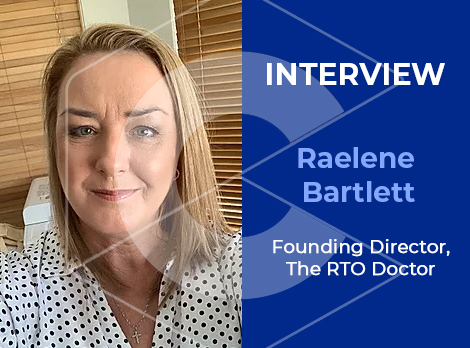
12 May, 2020
Interview with The RTO Doctor’s Founding Director – Raelene Bartlett
Raelene is the author of two best-selling books, CRICOS CPR: Top 5 Tips to Rescue Your RTO and Legal Decision-Making under the National Vocational Education and Training Regulator Act 2011 (Cth): An investigation into merits review. As one of Australia’s leading sanction management specialists in VET and international education, she is well known for her […]
5 years ago

12 May, 2020
‘Energising Tasmania’ agreement signed
The Australian and Tasmanian Governments have signed an agreement that will support thousands of Tasmanians through the delivery of fee-free training to develop a skilled workforce for the renewable energy and related sectors. The Minister for Employment, Skills, Small and Family Business, the Hon Michaelia Cash, said the $17 million Energising Tasmania project will equip […]
5 years ago

30 April, 2021
Building a strong workplace culture in your RTO
In every workplace, the culture of the company is imperative to the organisation’s success. The company culture has an impact on nearly every aspect of the business. So why is it so important for your RTO to have a positive workplace culture? Having a positive workplace culture equals a happy workforce. A happy workforce means […]
4 years ago

5 May, 2021
Change of Registered Training Organisation Ownership – What is required?
In this ever changing world, we are seeing many RTO’s change ownership for a variety of reasons. So what is involved? How do you know you are ready and prepared? What evidence do you need? Anyone involved in the transfer of ownership of registered training organisations (RTOs) and Commonwealth Register of Institutions and Courses for […]
4 years ago

3 June, 2021
Part 1- Contextualising of assessment resources
Contextualisation of training packages, accredited curricula and learning resources can be achieved without compromising the Standards for Registered Training Organisations (RTOs) 2015. Contextualisation is the addition of industry-specific information to tailor the Standards for Registered Training Organisations (RTOs) 2015 to reflect the immediate operating context and thereby increase its relevance for the learner. Contextualisation is […]
3 years ago

9 June, 2021
Part 2- Contextualising of assessment resources
Contextualisation of training packages, accredited curricula and learning resources can be achieved without compromising the Standards for Registered Training Organisations (RTOs) 2015. Contextualisation is the addition of industry-specific information to tailor the Standards for Registered Training Organisations (RTOs) 2015 to reflect the immediate operating context and thereby increase its relevance for the learner. Contextualisation is […]
3 years ago

16 June, 2021
Obligations of Registered Training Organizations in Terms of Reporting
Under the Standards for Registered Training Organisations 2015, all RTOs are obliged to provide accurate and complete data. All ASQA-registered training organisations RTO must meet mandatory annual data submission requirements, including: Submitting the annual declaration on compliance to ASQA Submitting total VET activity (TVA) data, including the reporting of unique student identifier (USI) data. There […]
3 years ago

24 June, 2021
Part 1- How compliance and quality assurance are two separate but intertwined concepts
When you plan to run a registered training organisation (RTO), you may find it difficult to know: the complete regulatory framework and environment your legal obligations and everything else required to run a successful, compliant Registered Training Organisation. Take compliance and quality assurance, for example, you may have heard about them, but do you know […]
3 years ago

1 July, 2021
The role of trainer in a training organisation
Trainers don’t just train. They listen, they learn, they plan, they adapt, they help, they soothe, they challenge and they tolerate. Students expect all this, and often more besides. But, for a Trainer to be effective at training, they must be very clear about what is most important. Fortress Learning gave it some thought and came […]
3 years ago

14 July, 2021
How to make reasonable adjustment in summative assessments
The concept of ‘reasonable adjustment’ is important and must be considered. This means that the summative assessment process may be modified so that individual participants are not disadvantaged. For example, a learner with a disability, or with issues relating to language, literacy or numeracy may require some adjustment to the assessment process. In accordance with […]
3 years ago

21 July, 2021
Part 3- How compliance and quality assurance are two separate but intertwined concepts
In this third and final part of our “compliance and quality assurance,” articles, we are continuing to discuss compliance and quality assurance requirements, standards, expectations and the differences between them. How does quality assurance differ from compliance? It can be overwhelming trying to keep track of all your organisation’s compliance obligations. That’s why many businesses […]
3 years ago

28 July, 2021
Various phases of the assessment and validation processes (Part 1)
In this article, we will discuss different phases of validation processes that you should be following in your RTO to ensure you meet regulatory requirements and industry expectations. Validation of RTO assessment resources You must validate all your assessment resources to ensure they meet the principles of assessment, rules of evidence, training package requirements, regulatory […]
3 years ago

5 August, 2021
Assessment issues that may have an impact on your RTO audit (Part 1)
It is important to look into ASQAs 2017 report that shows: Around 72% of RTOs FAIL audit on Assessment Approximately 50% of those FAIL to be able to rectify their assessment tools on resubmission under the OLD audit mode According to the new audit model: There may be NO opportunity to rectify critical non-compliances Initial […]
3 years ago

8 August, 2021
COVID-19 and changes in the changes in the Financial Viability and Risk Assessment (FVRA)
It poses significant challenges for RTOs to continue to provide high-quality training and ensure that students complete their courses during periods of lockdown and restrictions. The commercial prospects of many RTOs have been adversely harmed by the quarantine at home and travel restrictions implemented here and overseas. Under these circumstances, RTOs are under a great […]
3 years ago

8 August, 2021
RTO Survey: Mandatory Work Requirements for Certificate III in Individual Support
The Human Services Skills Organisation is conducting a survey about Mandatory Work Placement for students completing the Certificate III in Individual Support. RTOs delivering this qualification are encouraged to share their feedback to address their experiences in accessing the mandatory work placements. For more information, Click here.
3 years ago

8 August, 2021
Some ESOS courses are no longer required to be registered with CRICOS
It is now allowed for registered training providers to offer certain supplementary courses to international students without having those courses listed on the Commonwealth Register of Institutions and Courses for Overseas Students (CRICOS). The Education Services for Overseas Students (Exempt Courses) Instrument 2021, which exempts some supplementary courses from the ESOS Act, took effect on […]
3 years ago

8 August, 2021
The Covid-19 surge in Australia is threatening plans for student return
The state government of New South Wales has placed on hold its proposal to allow international students to return home after the state government unveiled a trial plan for a limited-phased return of international students in June. As a result of the most recent lockdown, there has been a pause in the implementation of this […]
3 years ago

13 August, 2021
Various phases of the assessment and validation processes (Part 2)
This is Part 2 of the article, where we are discussing the different phases of the validation processes an RTO should be following to ensure you meet regulatory requirements and industry expectations. In the previous article, we discussed the following regarding the validation of assessment resources: Explanation of assessment validation Typical benchmarks used during the […]
3 years ago

18 August, 2021
Assessment issues that may have an impact on your RTO audit (Part 2)
This is Part 2 continuing from the previous newsletter. As discussed in Part 1 of this article, there are a number of assessment-related issues that may affect your audit outcome. You should ensure your assessment resources, therefore, meet the following criteria: The context and conditions of assessment. For example, an assessment tool could be developed to cater […]
3 years ago

22 August, 2021
The VET Sector News II-August 2021
National Skills Week 2021: RETHINK your ideas National Skills Week, which is now in its eleventh year, will once again aim to bring to life the positive messages by exposing the talents, skills, career routes, and worth of apprentices and trainees across Australia to the general public and business community. For more information, Click here. […]
3 years ago

25 August, 2021
Getting acquainted yourself with the VET
VET information at your fingertips NCVER’s VET Knowledge Bank is a key source of reference information about Australia’s VET system. Did you know the VET sector is the largest education sector in Australia? Like most countries, Australia’s VET system is complex and ever-changing. Getting to know VET aims to explain the system via a chart of the key components, […]
3 years ago

31 August, 2021
Various phases of the assessment and validation processes (Part 3)
This is Part 3 of the article, where we are discussing the different phases of the validation processes an RTO should be following to ensure they meet regulatory requirements and industry expectations. In the previous articles, we discussed the following regarding the validation of assessment resources: Explanation of assessment validation Typical benchmarks used during the […]
3 years ago

3 September, 2021
Message from the General Manager (3 September 2021)
Message from the General Manager There are many changes taking place around the world right now, and the VET sector is no exception to this. The changes include VET Qualifications Reforms, a new AQF Framework, new technologies and practices for online course delivery. Some of these changes are covered in this edition of our newsletter. […]
3 years ago

3 September, 2021
How to transition from classroom to online or distance training and assessment
Moving from face-to-face training and assessment to online or distance learning and assessment can be difficult, especially when you have already invested in facilities, equipment, and resources for face-to-face training and assessment. However, in order to survive and also to embrace new technologies, many training organisations have decided to move to an online or distance […]
3 years ago
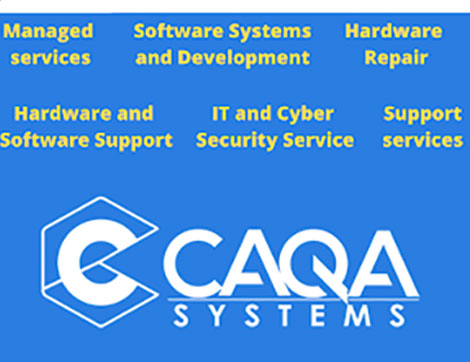
3 September, 2021
CAQA Systems Services
CAQA Systems provides technology services and support, and works in partnership with its customers. We collaborate with innovative organisations and service providers, assisting them in maximising the efficiency and effectiveness of their technology investments. We specialise in network administration, software systems and development, hardware and software support, software system and development, cybersecurity, information technology-related issues […]
3 years ago

11 September, 2021
What are the specific programs selected for Skill First 2022 for new applicants?
Skill First -2022 List of Specific Programs Do you know that one of the main eligibility criteria to apply for the 2022 Provider Selection Process is that your RTO must have delivered training (in the course that you seek to deliver under the contract) in one or more Programs of the 2022 List of Specific […]
3 years ago

15 September, 2021
Part 1- The trainer and assessor files
Compliance of your trainer records is a must for any Registered Training Organisation. If you do not know what you are looking for, you will always have difficulty finding it. The purpose of this article is to provide you with the required information and resources to ensure you can audit and review your trainer and […]
3 years ago

19 September, 2021
Message from the General Manager (19 September 2021)
Message from the General Manager Have you looked at ASQA’s new Corporate Plan? The plan shows that the organisation is committed to best practices and proportionate regulation. ASQA will assist providers in better understanding what they do, why they do it, and how they do it. According to ASQA, we may anticipate fair processes, consistency, […]
3 years ago

19 September, 2021
Professional Business Analysts (Proba)- Find business analysis solutions for your organisation
Stuck in the past, oblivious to prospects and using inefficient methods of doing business with consumers and suppliers? Professional Business Analysts (Proba) business analysis consulting services can assist you in outsourcing the right people to your team, making it easier to achieve your objectives. Unless you are a bob on the water, what business operator […]
3 years ago

19 September, 2021
CAQA Recruitment – Right people, Right skills, Right now
Are you looking for quality staff? Sick of wasting money on job ads that disappear in 100’s of other ads? Are you only getting applications from people who are not qualified to work in VET? Introducing CAQA Recruitment, a place dedicated to recruitment in the vocational education and training sector. Looking for staff? Design and […]
3 years ago

19 September, 2021
University jobs lost at a rate of ‘one in five’ as COVID-19 border laws continue to bite
As a result of the COVID-19 pandemic and accompanying economic recession, Australia’s higher education sector was hit harder than any other industry in the country’s economy, according to the latest report. Because of public health measures and the closure of Australia’s borders to international students, universities in Australia have been driven into financial and operational […]
3 years ago

19 September, 2021
The Australian Competition and Consumer Commission (ACCC) is seeking input on a proposed anti-plagiarism software merger.
In a statement released Thursday, the Australian Competition and Consumer Commission (ACCC) expressed reservations over Turnitin’s proposed acquisition of Ouriginal. It was in March 2021 that Turnitin first revealed its intention to buy Ouriginal. Turnitin and Ouriginal are anti-plagiarism software suppliers who primarily target higher education providers (HEPs), such as educational institutions, with their education […]
3 years ago

19 September, 2021
COVID Lifestyle transforms aspirations of young Australians
A survey of demand for information on careers and university courses has revealed tremendous change in aspirations across Australia in wake of COVID-19. Analysis by Good Education Media, the publishers of the Good Universities Guide, and higher education consultancy Twig Marketing studied millions of searches in the 18 months prior to the pandemic and in […]
3 years ago
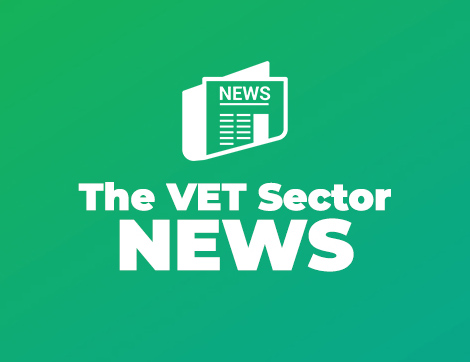
21 September, 2021
The changing career expectations of Australian teens
New analysis reveals the occupational aspirations of Australian girls have become more concentrated over time, while those of Australian boys have become less concentrated. The latest issue of ACER’s Snapshots series examines data from the 2018 OECD Programme for International Student Assessment (PISA) about Australian students’ occupational aspirations and the roles they expect to be […]
3 years ago

21 September, 2021
Morrison Government marks National Skills Week 2021 with highest funding for skills and training in Australian history
The Morrison Government has marked National Skills Week 2021 by reminding Australians of the incredible opportunities of a skilled career as hundreds of thousands make use of the skills and training pathways guaranteed through record levels of federal funding. Given the massive demand for skilled workers it is also a great reminder that it is […]
3 years ago
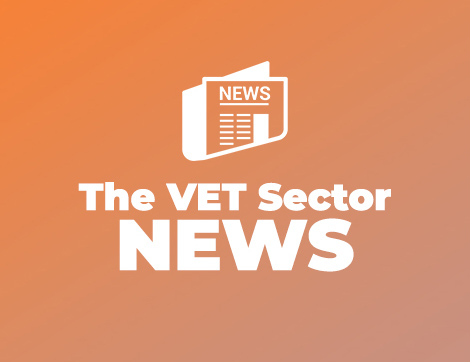
21 September, 2021
Aged care facing impending shortage of 110,000 workers, report finds
Urgent action is needed to address a looming shortage of at least 110,000 aged care workers over the coming decade, including boosting pay and conditions and creating a new dedicated migration path to boost the labour force. The stark warning is contained in a new report to be released by the Committee for Economic Development […]
3 years ago
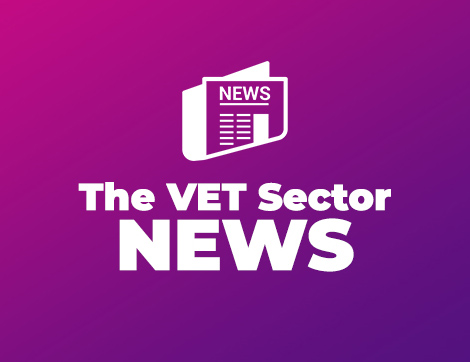
21 September, 2021
Australian border closures blamed for $2.7bn ELICOS related loss
Border closures related to the pandemic in Australia will see the country’s economy AU$2.7 billion worse off due to losses in income that would usually be generated by the ELICOS sector, according to a new analysis. English Australia’s Economic Impact research – prepared by Bonard – found that border closures resulted in a $1.2bn loss […]
3 years ago
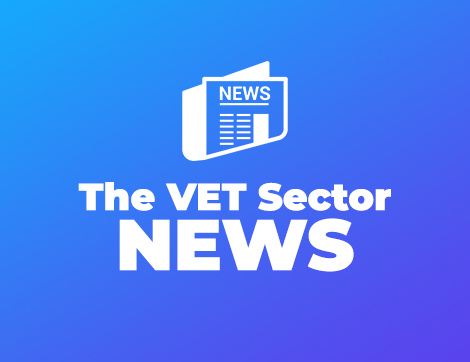
21 September, 2021
Extra $3.2m to boost support for vocational education and training
A new funding model, backed by a $3.2 million investment, will help government schools to support their students into industry-endorsed Vocational Education and Training (VET). Under the new arrangement, government schools will receive top-up funding of $300 for each student, or $600 for each eligible student with a School Card, enrolled in a VET qualification […]
3 years ago

21 September, 2021
Australia’s manufacturing sector to be revived as a result of COVID-19
IBSA Group, a workforce skills program developer, in support of National Skills Week next week, reports that Australia’s manufacturing sector will be reignited as a result of COVID-19. More job opportunities and skills-based apprenticeships are likely to be created, due to more companies manufacturing in Australia rather than abroad, IBSA Group CEO Sharon Robertson said. […]
3 years ago

21 September, 2021
U.S. Invests $220M in Artificial Intelligence Research Institutes
The U.S. Department of Agriculture’s National Institute of Food and Agriculture (USDA-NIFA) and the U.S. National Science Foundation (NSF) announced a $220 million investment in 11 new NSF-led Artificial Intelligence (AI) Research Institutes. USDA-NIFA and other agencies and organisations have partnered with NSF to pursue transformational advances in a range of economic sectors and science […]
3 years ago

21 September, 2021
China Revises Law to Advance Innovation in Science, Technology
Chinese national lawmakers began deliberating a draft revision to the law on scientific and technological progress, as the country seeks to advance the quality and efficiency of its innovation in science and technology. The draft was presented to the ongoing session of the Standing Committee of the National People’s Congress for its first reading. The […]
3 years ago

21 September, 2021
Afghan women at university will study separately from men, the Taliban say
The new Taliban government says Afghanistan’s education system had changed since their last time in power. But women will only be allowed to study in gender-segregated classes and Islamic dress enforced. Afghan women will be allowed to attend university as long as they study separately from men, the Taliban’s new higher education minister said on […]
3 years ago

21 September, 2021
Canada: students worry about unaffordable course withdrawal
International students enrolled at Canadian institutions have said they are unable to withdraw from their courses and get refunds due to college policies and visa processing delays. As part of applications for study visas, students using the fast-track study permit Student Direct Stream were required to pay for a full year of study up front, […]
3 years ago

21 September, 2021
Internationals contribute £28.8bn to UK economy yearly
International students in the UK contribute £28.8 billion to the country’s coffers annually – an equivalent of every citizen being on average of £390 better off – new analysis has revealed. The costs and benefits of international higher education students to the UK economy report found that international students add a net economic benefit of […]
3 years ago

21 September, 2021
‘It’s so hard’: how the pandemic upended young people’s career paths
Remote learning and its detrimental effect on their study have forced many teenagers to rethink tertiary education. Morgan Vella and his friends used to hold high ambitions for what life would look like after graduating high school: leaving their regional Victorian town for university in the city, enjoying a world of busy dormitories, student bars […]
3 years ago

21 September, 2021
India urges Australia to address students’ difficulties due to travel restrictions
India on Saturday urged Australia to sympathetically address as soon as possible the difficulties being faced by Indian students due to the travel restrictions put in place by that country in view of the COVID-19 pandemic. The issue was taken up during deliberations when External Affairs Minister S Jaishankar and Defence Minister Rajnath Singh held […]
3 years ago

21 September, 2021
India, Australia concur that ‘Afghanistan must not become terror hub’
India and Australia on Saturday, September 11, 2021, and expressed concern over the situation in Afghanistan and hoped that its territory would not be used for terrorists’ activities and doesn’t become a safe haven for terrorists. Speaking to the media after the first 2+2 dialogue between India’s external affairs minister S Jaishankar and defence minister […]
3 years ago

21 September, 2021
Student wellbeing and online learning: Tips for students
Due to the current outbreak of the COVID-19 strain of the coronavirus many higher education providers have switched to online delivery of all or many of their courses. Some providers have a lot of experience in online teaching while others are new to the experience. The same is true for the students in higher education. […]
3 years ago

21 September, 2021
Providers: Check your delivery locations in asqanet are up-to-date
Maintaining accurate and up-to-date provider information is a requirement for training providers. Accurate delivery location data is important to provide students with surety and understanding about how and where your courses can take place. The information you provide in asqanet will be reflected on training.gov.au. If you haven’t already done so this year, please check […]
3 years ago

21 September, 2021
Australia installs first space laser optical ground station in southern hemisphere
Recently, my colleagues and I swung a half-tonne telescope onto the roof of the physics building at the University of Western Australia. For a tense moment, my career hung from a crane hook. The telescope is the first of its kind in the southern hemisphere and represents a new generation of space communications using lasers. […]
3 years ago

21 September, 2021
Breaking the bamboo ceiling: Young Asian Australian women share their tips for success
While Asian Australians continue to be underrepresented in leadership positions, some young women have managed to break through the “bamboo ceiling”. The ABC spoke to four finalists in the 2021 40 Under 40 Most Influential Asian-Australians Awards — a nanotechnology engineer, a ballet dancer, a human rights lawyer and a telco executive — about the […]
3 years ago

21 September, 2021
The impact of COVID-19 on higher education and Vocational Education and Training
For more information, please visit: Higher Education: It is an unfortunate sign of the times that this summit is being held virtually, like so many other things at the moment. Large parts of the country are in lockdown, internal borders are closed, and families can’t travel to see loved ones. For our universities, I know […]
3 years ago

21 September, 2021
Viral email regarding ASQA’s current and past audit activities
If you follow Education Issues Australia on Twitter, or have LinkedIn, or Facebook accounts, you may have noticed a report developed by the @edissuesaus. The research identifies some serious and systemic problems with the current regulatory body. More information can be found by visiting this link. A copy of this has also been presented to […]
3 years ago
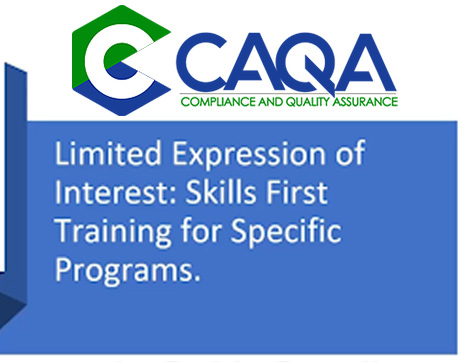
22 September, 2021
Our webinar related to Skills First – By CAQA Experts
Sukh Sandhu – Hello and welcome everyone. Please accept our thoughts and prayers for all those who are affected by the lockdown across Australia before we commence today’s presentation. The last several months have been extremely demanding and exhausting, but we are hoping that we will be able to come out of this situation eventually. […]
3 years ago

22 September, 2021
Various phases of the assessment and validation processes (Part 4)
This is Part 4 of the article, where we are discussing the different phases of the validation processes an RTO should be following to ensure they meet regulatory requirements and industry expectations. In the previous articles, we discussed the following regarding the validation of assessment resources: Explanation of assessment validation Typical benchmarks used during the […]
3 years ago

4 October, 2021
New job opportunities!
JOIN THE RECRUITMENT REVOLUTION Operations Manager (Mullumbimby, NSW) Sales Representative (Surry Hills, NSW) Compliance Manager (Wollongong, NSW) RTO Senior Office Administrator (Morayfield, QLD) Barber Trainers (Chermside, Brisbane West, Ipswich, Toowoomba) CHC Trainers (Melbourne, VIC) BSB Trainers (Melbourne, VIC) FNS Trainers (Melbourne, VIC) ICT Trainers (Melbourne, VIC) View all jobs Looking for a new opportunity? Whether […]
3 years ago

4 October, 2021
Australia’s five most powerful education leaders in 2021
AFR Magazine’s annual Power issue, out on Friday, October 1, includes lists of the key players across six industry sectors. Here the people topping teaching in a profound year for the sector. Remote learning has been gathering momentum for decades, but it was the initial shock of the pandemic that made it mainstream. Although the […]
3 years ago

4 October, 2021
New South Wales pilot plan ‘would expand and evolve’: minister
International students form long lines outside Melbourne foodbank A food charity in Melbourne is helping international students hit hard by lockdowns, providing supplies for almost 2 thousand students a week. For more information, please visit here. NSW releases ‘return to VET’ guidelines, visit here.
3 years ago

4 October, 2021
CQUniversity Graduate Guarantee offers a fully flexible, Graduate Certificate in Leadership and Entrepreneurship, free of charge, to all domestic and international graduates
Announced today, the CQUniversity Graduate Guarantee offers a fully flexible, Graduate Certificate in Leadership and Entrepreneurship, free of charge, to all domestic and international graduates who haven’t secured full-time or part-time work within six months of finishing their undergraduate degree. For more information, please visit here.
3 years ago
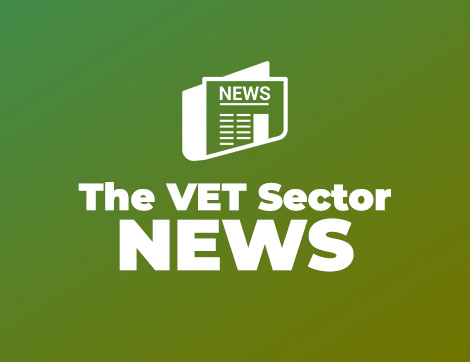
4 October, 2021
WA invests $31.7 million in in-house career counsellors
The Western Australian government has announced it will be deploying ‘career practitioners’ across 70 high schools in the state next year to help students explore work and study options after graduating. Education and training minister Sue Ellery announced the multi-million dollar initiative on Wednesday, saying that it would help set students up for successful futures. […]
3 years ago
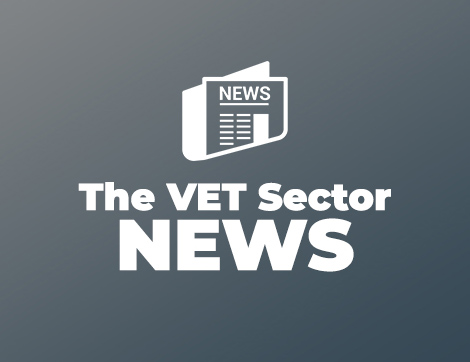
4 October, 2021
Education & Training Market is Booming Worldwide
The latest published market study on Global Education & Training Market provides an overview of the current market dynamics in the Education & Training space, as well as what our survey respondents—all outsourcing decision-makers—predict the market will look like in 2027. The study breaks the market by revenue and volume (wherever applicable) and price history […]
3 years ago

4 October, 2021
$1m donation expands Australia’s only nuclear engineering program
The nuclear engineering program prepares students for careers in high-tech industries including nuclear science, nuclear medicine, mining and resources, energy, manufacturing, aerospace, space exploration and defence. The funding aims to support scholarships for approximately 20 domestic students to obtain a master’s degree in Nuclear Engineering from UNSW’s School of Mechanical and Manufacturing Engineering, along with […]
3 years ago

4 October, 2021
ASQA approves extended transition period for a number of courses
ASQA has approved an extended transition period to a number of courses, including 52707WA Graduate Diploma of Dermal Therapies, 52709WA Graduate Diploma of Cosmetic. CPC30318 Certificate III in Concreting, HLT21015 Certificate II in Medical Service First Response, HLT31015 Certificate III in Ambulance Communication (Call Taking), HLT31115 Certificate III in Non-Emergency Patient Transport, HLT41015 Certificate IV […]
3 years ago

4 October, 2021
New Standards for Course Accreditation for Western Australia RTOs
Course accreditation is the formal recognition of a course by an accrediting body. In Western Australia, the course accrediting body is the Training Accreditation Council (TAC or the Council). Accredited courses fill a gap in skill requirements that are not covered by national industry training package qualifications. They must be developed in accordance with the […]
3 years ago

4 October, 2021
Benefits of virtual exchange programmes for international students
Moving halfway across the world isn’t the only way to reap the benefits of exchange programmes. Virtual exchange programmes — where participants connect with peers and institutions from anywhere in the world — achieve the same perks, like meeting new people, breaking down tired cultural stereotypes and bringing classroom learning to life. For more information, […]
3 years ago

4 October, 2021
Offshore learning hubs keep overseas students engaged
Universities in Australia and New Zealand, where borders have remained closed to international students for over 18 months, have found innovative ways to keep online learners engaged by setting up special learning centres in China. And student ‘hubs’ elsewhere in Asia are supporting students enrolled in different universities overseas, and who would otherwise be isolated […]
3 years ago

4 October, 2021
MIT tops QS employability ranking 2022
Global higher education analyst Quacquarelli Symonds has named the Massachusetts Institute of Technology in the US as the leader of its graduate employability ranking for a second year in a row. The QS Graduate Employability Rankings 2022 take a closer look into how well universities are preparing students for the world beyond higher education, using […]
3 years ago

4 October, 2021
Is blended delivery the future of Australian VET education?
A research by Sheila Hume and Tabatha Griffin, NCVER demonstrate that there was a strong response from the VET sector to COVID-19 restrictions, with the number of subjects delivered online increasing by about 24% between 2019 and 2020. The research reported that the shift to online training delivery was more pronounced for government-funded subject enrolments […]
3 years ago

4 October, 2021
Now and into the future
Approximately 12 months after the commencement of COVID-19 restrictions in Australia, only about one quarter (25.1%) of the surveyed RTOs who had transferred some face-to-face training online had reverted fully to their pre-COVID-19 approach to training. The survey findings demonstrate a strong pattern of RTOs continuing to offer online training in areas where it was […]
3 years ago

4 October, 2021
Who pays and the relationship to online delivery?
The overall increase of online training has coincided with a substantial rise in the number of governments funded online-only subject enrolments, with these enrolments increasing by almost 362 600 in 2020 (an increase of 40.4%; table 3).
3 years ago

4 October, 2021
Overview of training provider response.
COVID-19 has had an undeniable impact on the VET sector, with the significant and rapid transition to online learning early in the pandemic establishing the groundwork for and influencing the likelihood of RTOs using more blended learning in the future, as outlined in the below figure.
3 years ago

4 October, 2021
Delivery of training before and during COVID-19
Although there was a substantial transition (75.2%) to partial or full online delivery in response to COVID-19 (see the below table), more than half (52.5%) of the RTOs who did not (or could not) move any face-to-face training or assessment online had to suspend either full programs or certain subjects/units. This issue raises the question […]
3 years ago

4 October, 2021
Influence of COVID-19 on future plans
Training providers indicated a strong interest in incorporating more online training in the future, with 61.8% of those who moved some training online in response to the pandemic confirming that they were likely to use more blended learning in the future. In addition, other plans to expand online learning in the future included: likely to […]
3 years ago

4 October, 2021
Message from the CEO (4 October 2021)
Message from the CEO Our professional development event related to Skills First Funding was a huge success, with hundreds of people in attendance. We have made the video available online on our websites so that you can check out the material. We are a team of quality and compliance experts who have been in the […]
3 years ago

4 October, 2021
What to do if you think someone is infringing on your copyright? – Margaret Ryan (lawyer and trademarks attorney)
The short answer is to speak to a lawyer. But make sure that they are the right lawyer. Copyright law (or, more generally, intellectual property law) is a specialisation. The law is complex, and your lawyer needs to be familiar with it. A copyright lawyer will guide you through the process, but it typically involves: […]
3 years ago

4 October, 2021
The strategies for achieving personal and professional success.
There are many strategies to success you can use in your life. Some people are successful because they work hard. Other people are successful because they have a great opportunity that came their way. Some people are successful because they have the right connections, but most people are successful because they have good timing. These […]
3 years ago

4 October, 2021
Live webinar with CAQA – Your questions and answer series – Trainers and assessors competency and compliance requirements
The CAQA Live webinar series will be a great opportunity to learn from the experts who have been in this field for a long time. What makes this event so special is that the CAQA team has personally selected the topics and speakers for this Webinar Series. They have also designed it to be specifically […]
3 years ago

4 October, 2021
The Australian Government supports eligible employers who hire an Australian Apprentice with a new Australian Apprenticeship Program
Boosting Apprenticeships Commencement (BAC) wage subsidy is a new wage subsidy announced by the federal government to assist apprentices and trainees who are eligible for the wage subsidy to complete their qualifications. The Completing Apprenticeship Commencements (CAC) scheme, worth $716 million, would give qualifying employers with a subsidy of up to 10 percent of an […]
3 years ago

4 October, 2021
Different types of disruptions in training and education businesses: What are they and how can they impact You?
In a world where disruption is happening at a lightning speed, the question of how to thrive in this fast-paced environment is increasingly important. There are many who have been disrupted out of business and there are many more who would be disrupted in the near future. Disruption occurs when someone or something does something […]
3 years ago

4 October, 2021
The websites that will help you become much more productive and efficient.
The internet has a lot of resources that you can use to simplify your life. Websites like Google, Wikipedia, YouTube, and Amazon are among the most visited websites today. These sites make it easy to surf the web and all the information you need is at your fingertips. With the world becoming more and more […]
3 years ago
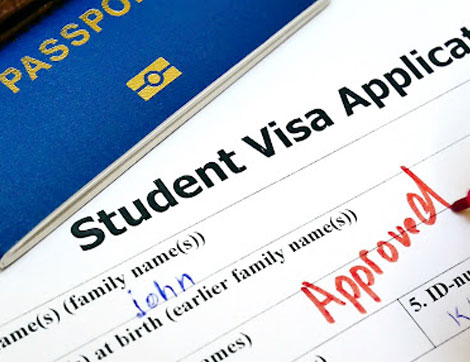
4 October, 2021
Australian Government has approved the International student return pilot programme
In a joint decision, the governments of Australia and New South Wales have authorised a second significant student return pilot, which will see up to 250 international students per fortnight returning to the state to continue their studies. According to current plans, the pilot will begin accepting students in December 2021 and will operate within […]
3 years ago

4 October, 2021
The journey from comfort zone to the growth zone
Going out of the comfort zone is not easy. It is difficult, challenging and it can be scary. But what if you knew that there was no way to grow without leaving the comfort zone? The journey from comfort zone to the growth zone can be a tough one. There are many uncertainties and insecurities […]
3 years ago

14 October, 2021
IDP Live transforms international landscape for next generation of students
IDP has recently launched its new student-centred app, IDP Live. IDP Live brings together a suite of tools, including a ground-breaking new service that fast-tracks students through to receiving an offer, prior to submitting their application – ensuring that students can find the right courses and institutions faster and more easily. For more information, please […]
3 years ago

14 October, 2021
Plan to bring thousands of nurses and doctors into ‘Fortress Australia’
Australia will allow 2000 overseas nurses and doctors to enter the country for work under a plan being finalised by the Commonwealth and states to ease a healthcare staffing crisis. With Melbourne and Sydney’s hospital beds jammed with COVID-19 patients and the health systems of other states also under strain, the reinforcements will be flown […]
3 years ago

14 October, 2021
Child Care subsidy changes to benefit 250,000 Australian families
A quarter of a million Australian families will be more than $2200 a year better off when additional childcare subsidies are introduced early next year. The additional subsidies for families with two or more children in care were due to start in July 2022, but the federal government has brought the start date forward to […]
3 years ago

14 October, 2021
Students head to Canada as Australia’s borders remain shut
Australia’s privileged position as one of the most highly prized destinations for international students has tumbled as Canada, the United States and Britain race to grab greater market share, a new survey has shown. Australia’s share of demand from international students has declined from 16.8 per cent to 11.6 per cent over the past two […]
3 years ago

14 October, 2021
Amendments to the ESOS Act effective 27 September 2021
Recent amendments to the Education Services for Overseas Students Act 2000 (ESOS Act) have replaced existing legislation around monitoring, investigation, and enforcement. This brings the ESOS Act and the National Vocational Education and Training Regulator Act 2011 (NVR Act) into closer alignment. ASQA’s regulation of training providers will remain the same, with a commitment to […]
3 years ago

14 October, 2021
ASQA Update – October 2021
ASQA’s risk-based regulatory program in 2021-22 has been informed by the outcomes of our annual environmental scan, which brings together feedback from stakeholder groups and regulatory data – and includes a focus on both provider and systemic risks. As a best-practice regulator, ASQA implements a risk-based approach to regulation, focusing regulatory attention on areas of […]
3 years ago

14 October, 2021
2021 fee relief now available to VRQA RTOs and non-school providers
Fee relief is available to eligible registered training organisations (RTOs) and non-school senior secondary providers (NSSSPs) to help ease the ongoing economic impact caused by the coronavirus (COVID-19) pandemic. The Minister for Education and the Minister for Training and Skills have provided fee relief to RTOs and NSSSPs by: extending the VRQA’s financial powers to […]
3 years ago

14 October, 2021
6 interesting stats from the Voice of VET RTO Industry Australia Report 2021
Australia’s Registered Training Organisations had a lot to say in this year’s Voice of VET Report. Here’s three things RTOs say have changed (and three things that haven’t). ReadyTech’s Voice of VET RTO Industry Report 2021 contains a lot of interesting insights into the RTO market. Based on a survey of 328 RTOs with a […]
3 years ago

14 October, 2021
Homeschool registrations rising in Australia, alternative education advocates say mainstream schools need a shake-up
Homeschooling is understood to be the fastest-growing education sector and alternative school advocates say it shows mainstream schooling needs a shake-up. For more information, please visit here.
3 years ago

14 October, 2021
New national food allergy guidelines recommend education instead of bans
New allergy guidelines have recommended removing blanket bans on foods from schools and childcare centres in favour of greater education and awareness around allergies and anaphylaxis. Released on Thursday, the National Allergy Strategy — developed with experts — aims to clarify managing and preventing anaphylaxis in schools, with research suggesting up to 1 in 20 […]
3 years ago

14 October, 2021
Quality higher education in times of crisis
Higher education is still suffering the consequences of the COVID-19 crisis. In some parts of the world, the crisis is as acute as ever. In Europe, we hope we are through the worst of it, but we have seen time and again over the past months that coping with the health crisis requires more time […]
3 years ago

14 October, 2021
NSW on the road to reopening
NSW will take its first steps towards reopening as the State passes the 70 per cent double vaccination target. With the first vaccination milestone being reached, the NSW Government is also easing a number of restrictions as part of the Reopening NSW roadmap, which will allow fully vaccinated adults to enjoy more freedoms from next […]
3 years ago

14 October, 2021
Teachers are driving force behind ‘global education recovery’ from COVID-19
World Teachers’ Day, celebrated annually on 5 October, provides an important opportunity to call on Governments and the international community to spotlight teachers and their challenges, and share effective and promising policy responses. “They are the principal actors of the global education recovery efforts and are key in accelerating progress towards inclusive and equitable quality […]
3 years ago

14 October, 2021
Beyond Zoom, Teams and video lectures — what do university students really want from online learning?
As any university student, lecturer or tutor can attest, the pandemic has turned learning and teaching upside down. So it’s important we understand what happens for students when their learning shifts online with little to no warning. Since 2020, there’s been a growing body of important research into the impact of online learning for educators. […]
3 years ago

14 October, 2021
Fiverr Expands Online Education Offering With Acquisition of CreativeLive
Fiverr (NYSE: FVRR), the company that is changing how the world works together, today announced its acquisition of Seattle-based online learning company CreativeLive, a renowned creative and entrepreneurial education platform where people can learn about design, business, photography, video, marketing and more. Instructors include a diverse group of Pulitzer-, Grammy-, and Oscar-winners, New York Times […]
3 years ago

14 October, 2021
India top court rules online education access cannot be denied to underprivileged children
The Supreme Court of India ruled on Friday that if the fundamental right to education under “Article 21A of the Constitution has to become a reality,” then the needs of underprivileged children “to receive adequate access to online education cannot be denied.” For more information, please visit here.
3 years ago

14 October, 2021
Online Learning Platforms A Lifeline For Students During The Pandemic
There have been many forced changes in the world over the past 18 months, with every industry seeing some form of impact. Life is slowly but surely becoming recognizable again, but in the education sector there is a new normal, one that makes getting extra help and benefitting from shared resources more convenient than ever […]
3 years ago

14 October, 2021
Challenges Of Online Education For Teachers And Students
Covid-19 and the consequent lockdown forced schools, colleges and universities to stop all regular face-to-face educational interactions between teachers and students. They had to move literally overnight to the online-only learning-teaching model. This entailed not only the proficiency of both teachers and the students in quite unfamiliar sets of competencies but also focused mitigation of […]
3 years ago

14 October, 2021
School And Online Learning Evolve Rapidly: Nerdy CEO Discusses Trends
As some students get back to school amid a new wave of variants and ongoing anxiety, the future of school and how students will learn continues to evolve rapidly. According to research I’ve been involved in during Covid as well as multiple reports I have reviewed from Barkley, Gen HQ & Pew Research, Gen-Z is […]
3 years ago

14 October, 2021
A New Normal For Online Education
The headline appeared in the New York Times on February 21, 1994: “Computers and Phones Pave New Path to College Degree.” The article characterized how the future of the college classroom “may be no classroom at all.” It went on to describe rising demand among students for “long-distance study” (the term online education hadn’t yet […]
3 years ago

14 October, 2021
Online Learning – The Future of Education?
The coronavirus pandemic that gripped humanity in early 2020 has led to unprecedented educational measures everywhere. Educational institutions, from schools to universities, have been partially or completely closed in more than 180 countries. In most states, all schools were completely quarantined, while some were closed in the United States, Canada, Europe, Russia, Vietnam, and Australia. […]
3 years ago

14 October, 2021
Online Learning Platforms A Lifeline For Students During The Pandemic
There have been many forced changes in the world over the past 18 months, with every industry seeing some form of impact. Life is slowly but surely becoming recognizable again, but in the education sector there is a new normal, one that makes getting extra help and benefitting from shared resources more convenient than ever […]
3 years ago

14 October, 2021
How online education can give disabled children greater learning opportunities
Globally, about 15 per cent of the population lives with some form of disability. Of this, 80 per cent lives in developing countries. Persons with disabilities (PwDs) are among the most marginalised groups. They encounter a range of barriers and are more likely to experience adverse socioeconomic outcomes. Limited support infrastructure can have a significant […]
3 years ago

14 October, 2021
Student sex work is happening, and universities need to respond with health services
As university and college semesters unfold, a small but increasing percentage of students will likely also be taking on a largely under-reported and overlooked form of part-time employment: sex work. Over the past year, there have been multiple reports of a dramatic increase in content creators on OnlyFans — a platform that allows fans to […]
3 years ago

14 October, 2021
How much will it cost for international students to return to Australia?
New South Wales and Victoria recently announced pilot plans to facilitate international students’ return to Australia. This is welcome news for those who have been locked out of the country for the better part of 18 months but the return to Australia cost could be a problem According to The Guardian, some students worry that […]
3 years ago

14 October, 2021
Experts weigh in on Australia’s 10-year strategy at AIEC
The Australian government is hoping to release its anticipated Australian Strategy for International Education 2021-2030 before the year is out, a government representative said at the Australian International Education Conference 2021. The strategy – which government launched a consultation on earlier this year – has received over 120 written submissions, assistant secretary at the department […]
3 years ago

14 October, 2021
Hate crime victim inspires We Are Australia launch
We Are Australia, a dedicated organisation to support international student victims of crime in Australia, was launched on October 1, pledging to be the voice of international student victims. For more information, please visit here.
3 years ago

14 October, 2021
Keystone acquires UniQuest in enrolment generation drive
This is another acquisition for Keystone as it evolves its business mission. Historically, the Norway-based business has been focused on lead generation and the move to acquire UniQuest will provide more value to customers – especially around enrolment generation, the company noted. Keystone expects the move will help it further evolve into a “complete end-to-end […]
3 years ago

14 October, 2021
Australian far-right terrorism investigations have increased by 750 per cent in 18 months
Two years ago, nationalist and racist violent extremism barely accounted for two per cent of the Australian Federal Police’s counter-terrorism caseload. Now it’s the country’s fastest-growing threat. For more information, please visit here.
3 years ago

14 October, 2021
Update related to AQF Framework
We’d like to provide an update on the new AQF framework, currently under development. The Review of the Australian Qualifications Framework was completed at the end of 2019. AQF Review provided 21 recommendations aimed at ensuring that the AQF continues to serve its intended purpose now and in the years to come. Changes to the […]
3 years ago

14 October, 2021
We are looking for a Senior Compliance and Quality Assurance Manager to join our team at CAQA, Career Calling International.
We are seeking a Senior Compliance and Quality Assurance Manager to join our management team. To be successful in this position, you need to be well-versed in risk management principles, regulatory and legislative instruments and standards. You need to also be solutions-focused and provide evidence-based advice to organisations involved in training and assessment of students. […]
3 years ago

14 October, 2021
Live webinar with CAQA – Your questions and answer series – Trainers and assessors competency and compliance requirements
The CAQA Live webinar series will be a great opportunity to learn from the experts who have been in this field for a long time. What makes this event so special is that the CAQA team has personally selected the topics and speakers for this Webinar Series. They have also designed it to be specifically […]
3 years ago

14 October, 2021
CAQA Online forums, CAQA Info for maintaining your compliance and regulatory knowledge
CAQA Online forums provide information for RTO professionals. The purpose of the forums is to support compliance and regulatory knowledge with the help of other professionals in the field. Some of the benefits of subscribing to our online forums are that it provides access to knowledge sharing and networking opportunities among peers in the vocational […]
3 years ago

14 October, 2021
Attract people, places and things perfect for your growth
People, places and things are all aspects of life that can help or harm your growth. It is, therefore, important to understand why and how you should attract people, places and things perfect for your personal and professional growth. If you don’t, you will not be able to make the right connections. You can make […]
3 years ago

14 October, 2021
Why should you read and share THE VET SECTOR newsletter?
The purpose of this newsletter is to maintain an ongoing dialogue with the industry representatives, giving them a voice and platform to raise their concerns and practices. The importance of this newsletter is not only because it has a lot of subscribers but also because without the right information, one cannot be an active participant […]
3 years ago

14 October, 2021
Message from the CEO
Message from the CEO We need to make sure we eliminate any issues that lead to decreased student engagement and an increase in drop-out rates. We need to think about and execute support for students who want to complete a VET qualification and follow their interests or passion. Coming out of lockdown, we will need […]
3 years ago

1 November, 2021
Apprenticeships in butchery, childcare and hairdressing decline across the ACT
Canberrans have been warned local butchers are a “dying trade” after data showed a steep drop in apprenticeships. Figures collated by the National Centre for Vocational Education Research showed a decline in trainee butchers, hairdressers and childcare workers in the ACT since 2013. It was felt hardest in hairdressing, with trainee numbers falling by 46.5 […]
3 years ago

1 November, 2021
Covid outbreaks have shut more than 320 schools across NSW and Victoria in past three weeks
More than 300 schools across New South Wales and Victoria have closed down in the last three weeks due to Covid outbreaks, with the majority of students still due to return to classrooms. Between the start of term four on 4 October and 22 October, there were 234 closures at government schools in Victoria, figures […]
3 years ago

1 November, 2021
Foreign students, workers to be allowed back into Australia before Christmas and tourists could follow
International students and workers will be allowed to return to Australia within weeks, with tourists potentially permitted back into the country by Christmas. With Australia’s international borders reopening in Sydney for citizens, residents and their families on November 1, the government is moving fast on the plan to allow more travellers into the country. For […]
3 years ago

1 November, 2021
World-first Gold learning hub confirmed for Sandhurst
The PGA of Australia will seek to further elevate the capabilities of the current and future golf industry workforce through the establishment of the PGA Golf Learning Hub at Sandhurst, south of Melbourne. The completion of the Australian Golf Centre at Sandringham and the relocation of PGA administrative staff to the heart of the Melbourne […]
3 years ago

1 November, 2021
Quarantine requirements dropped for Canberra universities
A third Australian jurisdiction has signalled its intention to allow the untrammelled return of international students, with the Australian Capital Territory (ACT) vowing to admit fully immunised tertiary students in time for the start of the 2022 academic year in February. Chief minister Andrew Barr said that while students would need to adhere to federal […]
3 years ago

1 November, 2021
The ‘ABC’ of Academic Credit Transfer in India: India Gives Students Flexibility in Higher Education Through Academic Bank of Credits
An Academic Bank of Credits will be set up where students can deposit, transfer and redeem credits earned through a variety of courses, including MOOCs Flexibility for students to experience diverse learning Students to have multiple entry and exit points in higher education, resulting in certificate, diploma, degree etc Synchronisation proposed for general and vocational […]
3 years ago

1 November, 2021
Australia mulls visa reforms for offshore students to enjoy work rights
Can international students expect Australian student visa reforms on the horizon, and to play a bigger role in Australia’s skilled migration? The International Education Association of Australia (IEAA) has submitted a policy paper to the government that proposed any international student who undertakes an additional professional year in skills shortage areas should be given double […]
3 years ago

1 November, 2021
Queensland has set a new national record for the number of women entering the construction industry.
According to data released this week by the National Centre for Vocational Education Research (NCVER), Queensland has achieved the highest-ever number of females enrolling in a construction trade apprenticeship of any state or territory in the country. Furthermore, according to the data, the overall number of female construction apprentices in the Sunshine State is larger […]
3 years ago

1 November, 2021
Update about Victoria’s International Student Arrivals Plan
International students will start returning to Victoria by the end of 2021 under the Victorian Government’s International Student Arrivals Plan, which has been endorsed by the Australian Government. The plan was developed in consultation with Victorian universities, and industry peak bodies from across the international education sector, including the Independent Tertiary Education Council Australia, the […]
3 years ago
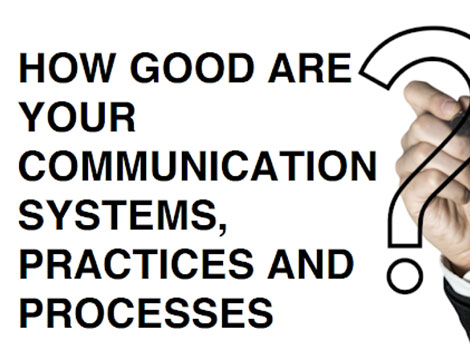
1 November, 2021
The benefits of effective communication systems, practices and processes
Communication is the key to building successful relationships and human connections. It’s also the key to success in any professional field. Effective communication is essential to the success of any training or education program. Effective communication is not easy, it requires effort and time. Effective communication systems in any training and education business will ensure […]
3 years ago
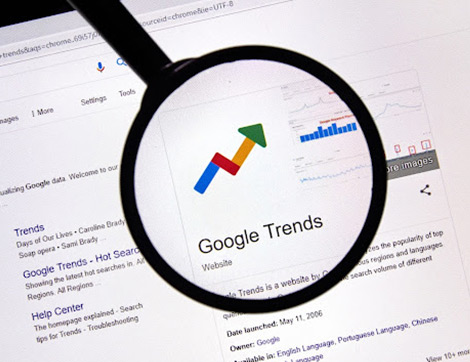
1 November, 2021
The problem for users of Google’s dynamic keyword insertion ~ By Margaret Ryan (lawyer and trademarks attorney)
Is it a good idea to use someone else’s name as a Google keyword and Google headline? The Full Court of the Federal Court has recently said “no”. Google keywords on a website are normally not visible but they are used to attract consumers to the site when that keyword is typed into the Google […]
3 years ago

14 December, 2021
The government’s digital ID program is ramping up as legislation is on the horizon.
The federal government has issued an open invitation to businesses interested in providing feedback and comments on Australia’s federated digital identification system ahead of the system’s planned expansion, which will take place next year. In order to determine what services private sector organisations are interested in having accredited under the trusted digital identity framework (TDIF), […]
3 years ago

14 December, 2021
Professional development session by Edu Learning and CAQA Skills – Transcript – Trainers and Assessors requirements
Sukh Sandhu: – Hello, everyone. Welcome to another professional development session brought to you by Compliance and Quality Assurance, CAQA, Edu Learning, CAQA Skills, The VET Sector and Career Calling International. We would like to pay our respects to traditional owners of the land and to their elders, past and present. Let me remind you […]
3 years ago

31 January, 2022
Why is Australia’s rank so low when it comes to innovation?
The ability to innovate is one of the most important factors in economic growth. It increases productivity by making it possible to produce more with the same amount of input or investment as before. Putting it simply, when productivity increases, more products and services are produced, which results in higher economic growth. Australia has a […]
3 years ago

31 January, 2022
To be implemented by 2030, the government has published a roadmap for a “data-driven society.”
The federal government issued Australia’s first data strategy and associated action plan, outlining a long-term vision for the development of an effective, safe, ethical and secure national data ecosystem. Stuart Robert, the Minister for Employment, Workforce, Skills, Small and Family Business, and Jane Hume, the Minister for Superannuation, Financial Services and Digital Economy, jointly announced […]
3 years ago

20 February, 2022
The Victorian Chamber of Commerce and Industry survey unveiled Victoria as the most difficult state in Australia to do business in.
More than half of Australian businesses consider Victoria to be the most difficult state in which to conduct business, with local operators paying the highest taxes in the country. The Victorian Chamber of Commerce and Industry unveiled its first cost of doing business index on Wednesday, which ranks the cost of doing business in all […]
3 years ago

20 February, 2022
As the number of overseas students declines, Australia faces the prospect of losing future skilled workers and citizens.
When so many international students left Australia, think about what the country lost. Approximately $40.3 billion was contributed to the economy by them in 2019. Approximately 250,000 jobs in Australia were supported by international education. In some sections of the higher education industry, border closures resulted in a reduction of enrollments of up to 70{811251a11785699196b1edfb998e8df43131d83f2e2fc9971f96b5821112af2c}. […]
3 years ago

20 February, 2022
Virtual Reality presents a number of challenges
Virtual Reality, the immersive presentation of a digital environment, has been around for many decades – but it’s only recently that we’ve seen affordable and accessible consumer hardware offering the ability to view and interact with VR via an ordinary smartphone. With the rise of VR technology, companies are looking to develop new ways to […]
3 years ago

20 February, 2022
Why Australia is falling behind New Zealand in terms of digital (in)accessibility
The findings of a new study by Infosys suggest that Australia lags behind New Zealand when it comes to ensuring that all digital properties are accessible, such as making mobile banking and digital citizen services accessible, as well as making online learning experiences accessible. 650 medium and large businesses, public sector organisations, and non-profit organisations […]
3 years ago

20 February, 2022
What types of jobs are likely to be in demand in the future?
The future of work is a difficult topic to discuss because we do not know what the future will bring. However, there are some trends that can be predicted with a high degree of certainty. The jobs in the future will be more focused on people and their skill sets. As automation becomes more prevalent […]
3 years ago

24 March, 2022
CAQA Recruitment – The current job vacancies
Resource writers CAQA Resources is looking for qualified instructional writers and subject matter experts to develop training materials for the community services and health services industries. If you are interested, email your resume and cover letter to info@caqarecruitment.com.au Marketing Manager This role is responsible for setting and applying the strategic direction and for the day […]
3 years ago

24 March, 2022
Client testimonials – March 2022
Making a difference in the lives of our client’s in the RTO and Higher Education spaces is our highest priority. Sharing their success brings us pride in everything we do. “I came across Sukh Sandhu through a professional referral in March 2021 when we acquired an RTO. Since day one, Sukh has been very approachable […]
3 years ago

24 March, 2022
CAQA Recruitment
Are you looking for staff? At CAQA Recruitment we help employers find talent for their organisation. We understand that hiring is a complex and sometimes costly process. However, it can be simplified and made easy on a budget by opting for our services. Our recruitment platform receives a huge number of interest from applicants who […]
3 years ago

24 March, 2022
Online Media Solutions (OMS) Services
Over the past two decades, Online Media Solutions (OMS) has provided assistance to clients worldwide. OMS merged into the CAQA and Career Calling brands in 2013. Services offered by Online Media Solutions include: website design and development; website security; web hosting; domains marketplace; development of iOS and Android applications; software development; graphics design including logos, […]
3 years ago

24 March, 2022
CAQA Systems Services
CAQA Systems provides technology services and support, and works in partnership with its customers. We collaborate with innovative organisations and service providers, assisting them in maximising the efficiency and effectiveness of their technology investments. We specialise in network administration, software systems and development, hardware and software support, software system and development, cybersecurity, information technology-related issues […]
3 years ago

24 March, 2022
CAQA Labs – Virtual lab environment our experts are working on!
The benefits of a virtual lab for information technology and information system related subjects are many. First, the virtual lab provides a simulated environment that is very close to the actual environment where the students will be working after they graduate. In other words, a virtual lab allows students to experience what it is like […]
3 years ago

24 March, 2022
On the way to becoming a renewable superpower, Australia is confronted with a severe skills shortage.
Danny Nielsen, the new Senior Vice President and Country Head of Vestas in Australia and New Zealand, has warned that the country is facing a skills shortage in the renewable energy sector, as the roll out of larger and more complex wind and solar projects accelerates in order to populate renewable energy zones and meet […]
3 years ago

24 March, 2022
The relationship between the training organisation and the regulatory body
The relationship between the training organisation and the regulatory body is important for both organisations. The regulatory body acts according to set standards that the training organisation must meet, and the training organisation provides the quality training and assessment that must meet the regulatory requirements and best practices of the industry. This relationship should be […]
3 years ago

24 March, 2022
NCVER Submission – How to report AVETMISS data through NCVER tools
Our consultancy department has received a number of inquiries where registered training organisations asked us to provide an article on reporting AVETMISS data through NCVER tools. Here it is: Step 1: Visit the RTO Hub section provided by NCVER RTO Hub has all the reporting tools, support, information related to key details, and other important […]
3 years ago

24 March, 2022
Australians are poorly prepared for the digital workplace
The digital age is upon us and with it comes new opportunities and challenges in the workplace. However, a recent study by Global Digital Skills Index 2022 Digital Skills Index has found that Australians are unprepared for the digital workplace, lagging behind other countries in terms of their use of technology. According to the recently […]
3 years ago

25 April, 2022
CAQA Recruitment – The current job vacancies
Resource writers CAQA Resources is looking for qualified instructional writers and subject matter experts to develop training materials for the community services and health services industries. If you are interested, email your resume and cover letter to info@caqarecruitment.com.au Marketing Manager This role is responsible for setting and applying the strategic direction and for the day […]
3 years ago

25 April, 2022
Online Media Solutions (OMS) Services
Over the past two decades, Online Media Solutions (OMS) has provided assistance to clients worldwide. OMS merged into the CAQA and Career Calling brands in 2013. Services offered by Online Media Solutions include: website design and development; website security; web hosting; domains marketplace; development of iOS and Android applications; software development; graphics design including logos, […]
3 years ago

25 April, 2022
CAQA Recruitment
Are you looking for staff? At CAQA Recruitment we help employers find talent for their organisation. We understand that hiring is a complex and sometimes costly process. However, it can be simplified and made easy on a budget by opting for our services. Our recruitment platform receives a huge number of interest from applicants who […]
3 years ago

25 April, 2022
CAQA Systems Services
CAQA Systems provides technology services and support, and works in partnership with its customers. We collaborate with innovative organisations and service providers, assisting them in maximising the efficiency and effectiveness of their technology investments. We specialise in network administration, software systems and development, hardware and software support, software system and development, cybersecurity, information technology-related issues […]
3 years ago

25 April, 2022
Edu Learning – Your door to professional development opportunities
We would love to have you join our professional development retainer agreement services or individual professional development opportunities through Edu Learning. Our organisation works with the aim to help you grow your skills in a fun and interactive way. The benefits of joining our organisation are numerous, from getting tips from VET experts and industry […]
3 years ago

25 April, 2022
CAQA Labs – Virtual lab environment our experts are working on!
The benefits of a virtual lab for information technology and information system related subjects are many. First, the virtual lab provides a simulated environment that is very close to the actual environment where the students will be working after they graduate. In other words, a virtual lab allows students to experience what it is like […]
3 years ago

25 April, 2022
The Indo-Pacific will benefit from a historic free trade deal with India.
According to Australia’s trade minister, the historic trade agreement with India will contribute to the promotion of stability in the Indo-Pacific region. The agreement will result in the elimination of tariffs on more than 85 percent of Australian goods exported to India, which are currently worth more than $12 billion annually. Meanwhile, duty-free treatment will […]
3 years ago

25 April, 2022
Strategic Review into First Aid units of competency in Western Australia
The Training Accreditation Council’s risk management approach to regulation is to consider the risks to the quality of vocational education and training outcomes on an ongoing basis. Underpinned by the Council’s Risk Framework, stakeholders are informed about the Council’s regulatory focus areas via its Regulatory Strategy. The Council’s Focus on Quality: Regulatory Strategy 2021-2023 identifies […]
3 years ago

25 April, 2022
Inconsistent judgements by the auditors working with or for the regulatory body
Auditors are expected to use their judgement when conducting an audit. However, there can be inconsistencies in how different auditors exercise their judgement, which can lead to differences in the outcome of the audit. This can be a problem if the auditor’s judgement is not based on a sound understanding of: What the regulatory body’s […]
3 years ago

25 April, 2022
CAQA Analysis on NCVER’s Research Report – The four features of high-quality VET delivery.
It is widely accepted that high-quality vocational education and training (VET) is essential for achieving positive outcomes for both individuals and industry. However, there is still much debate about what factors make up a high-quality VET offering. In this article, we explore some of the key factors that registered training organisations (RTOs) should consider when […]
3 years ago
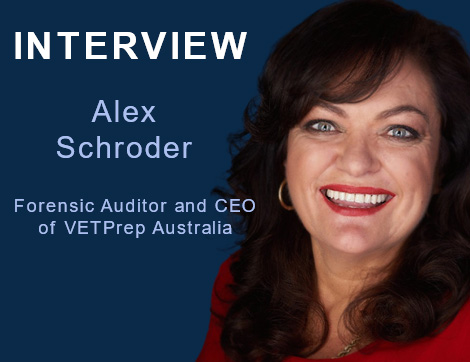
25 April, 2022
Interview with Forensic Auditor and CEO of VETPrep Australia – Alex Schroder
Alex is Australia’s leading VET Compliance Specialist, Forensic Auditor, and the CEO of VETPrep Australia. With qualifications Law, Commerce, Marketing, Management, Business, Quality Assurance and Strategic Leadership, Alex’s expertise is unsurpassed. She is the creator of the Certificate IV in RTO Compliance, Diploma of RTO Compliance Management, The RTO Standards Unpacked! and other courses. Alex […]
3 years ago

22 May, 2022
CAQA Recruitment – The current job vacancies
Resource writers CAQA Resources is looking for qualified instructional writers and subject matter experts to develop training materials for the community services and health services industries. If you are interested, email your resume and cover letter to info@caqarecruitment.com.au Marketing Manager This role is responsible for setting and applying the strategic direction and for the day […]
3 years ago

22 May, 2022
Online Media Solutions (OMS) Services
Over the past two decades, Online Media Solutions (OMS) has provided assistance to clients worldwide. OMS merged into the CAQA and Career Calling brands in 2013. Services offered by Online Media Solutions include: website design and development; website security; web hosting; domains marketplace; development of iOS and Android applications; software development; graphics design including logos, […]
3 years ago

22 May, 2022
CAQA Recruitment
Are you looking for staff? At CAQA Recruitment we help employers find talent for their organisation. We understand that hiring is a complex and sometimes costly process. However, it can be simplified and made easy on a budget by opting for our services. Our recruitment platform receives a huge number of interest from applicants who […]
3 years ago

22 May, 2022
CAQA Systems Services
CAQA Systems provides technology services and support, and works in partnership with its customers. We collaborate with innovative organisations and service providers, assisting them in maximising the efficiency and effectiveness of their technology investments. We specialise in network administration, software systems and development, hardware and software support, software system and development, cybersecurity, information technology-related issues […]
3 years ago

22 May, 2022
Edu Learning – Your door to professional development opportunities
We would love to have you join our professional development retainer agreement services or individual professional development opportunities through Edu Learning. Our organisation works with the aim to help you grow your skills in a fun and interactive way. The benefits of joining our organisation are numerous, from getting tips from VET experts and industry […]
3 years ago

22 May, 2022
CAQA Labs – Virtual lab environment our experts are working on!
The benefits of a virtual lab for information technology and information system related subjects are many. A virtual lab provides a simulated environment that is very close to the actual environment where the students will be working after they graduate. In other words, a virtual lab allows students to experience what it is like to […]
3 years ago
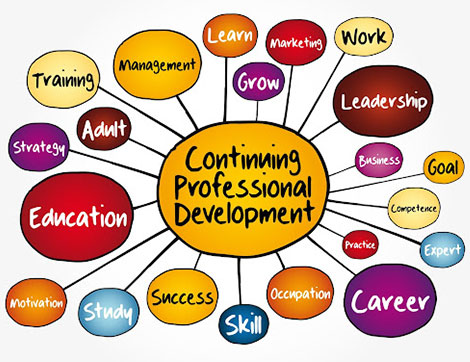
22 May, 2022
What ongoing professional development is, and why it is important to your professional career
One of the most important things you can do for your professional career is to continue learning and growing. There are many different types of professional development (PD) opportunities available to you as a professional. What is PD, and why is it important? Professional development is a term used to describe any type of learning […]
3 years ago

12 June, 2022
CAQA Recruitment – The current job vacancies
Resource writers CAQA Resources is looking for qualified instructional writers and subject matter experts to develop training materials for the community services and health services industries. If you are interested, email your resume and cover letter to info@caqarecruitment.com.au Marketing Manager This role is responsible for setting and applying the strategic direction and for the day […]
2 years ago

12 June, 2022
Online Media Solutions (OMS) Services
Over the past two decades, Online Media Solutions (OMS) has provided assistance to clients worldwide. OMS merged into the CAQA and Career Calling brands in 2013. Services offered by Online Media Solutions include: website design and development; website security; web hosting; domains marketplace; development of iOS and Android applications; software development; graphics design including logos, […]
2 years ago

12 June, 2022
CAQA Recruitment
Are you looking for staff? At CAQA Recruitment we help employers find talent for their organisation. We understand that hiring is a complex and sometimes costly process. However, it can be simplified and made easy on a budget by opting for our services. Our recruitment platform receives a huge number of interest from applicants who […]
2 years ago

12 June, 2022
CAQA Systems Services
CAQA Systems provides technology services and support, and works in partnership with its customers. We collaborate with innovative organisations and service providers, assisting them in maximising the efficiency and effectiveness of their technology investments. We specialise in network administration, software systems and development, hardware and software support, software system and development, cybersecurity, information technology-related issues […]
2 years ago

12 June, 2022
Edu Learning – Your door to professional development opportunities
We would love to have you join our professional development retainer agreement services or individual professional development opportunities through Edu Learning. Our organisation works with the aim to help you grow your skills in a fun and interactive way. The benefits of joining our organisation are numerous, from getting tips from VET experts and industry […]
2 years ago

12 June, 2022
Australia faces one of the largest skills shortages of our time.
According to a study conducted by KellyOCG, a global outsourcing and consulting firm that specialises in providing workforce strategy, solutions, and operations, only 12 percent of respondents believed hybrid work had a positive impact on their company culture, which is significantly lower than the global average of 21 percent. Thirty-seven percent of those surveyed said […]
2 years ago
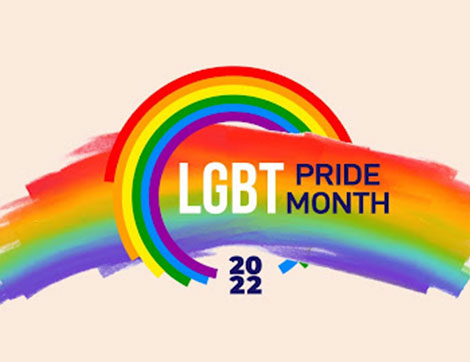
12 June, 2022
How to be an LGBT+ Inclusive Training organisation
LGBT+ collectively refers to people who identify as lesbian, gay, bisexual, or transgender, and to people with gender expressions outside traditional norms, including nonbinary, intersex, and other queer people (and those questioning their gender identity or sexual orientation), along with their allies. There are a number of things that training organisations can do to be […]
2 years ago

12 June, 2022
The cost of living is hurting international students
Living costs in Australia are soaring, and international students are feeling the pinch. Some are being forced to rely on food vouchers and charity to get by. The cost of living in Australia has been rising steadily over the past few years, and international students are feeling the pinch more than most. With tuition fees […]
2 years ago

12 June, 2022
Interview with the compliance guru-Shruti Nargundkar, Director and Principal Consultant, Nextext
Profile: Shruti is an education innovator, quality and compliance consultant entrepreneur and manager with over 35 years of experience in education across secondary school, English Language, Vocational Education and Training and Higher Education in Australia as well as internationally. Shruti is the founding director of NEXTEXT, a vocational education and quality and compliance consultancy that […]
2 years ago

12 June, 2022
The evolution of the employee – past vs. future requirements
The skills and knowledge gap The 21st-century workplace has seen a dramatic shift in the skills and knowledge required of employees. Whereas in the past, workers might have been able to get by with a limited skill set, today’s businesses require their employees to be highly skilled and knowledgeable in order to stay competitive. This […]
2 years ago
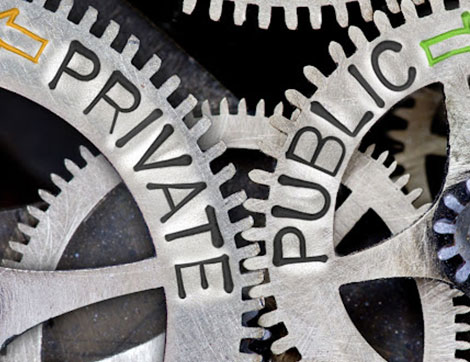
12 June, 2022
The value of the critical contribution of the private training sector
Photo courtesy: NCVER The private training sector is a critical contributor to Australia’s vocational education and training system. Currently, the private sector delivers 70% of vocational education and training in Australia. This includes the delivery of accredited courses that helps people develop new skills or improve their existing ones. The private sector plays an important […]
2 years ago

12 June, 2022
The different types of e-learning solutions
You will be required to analyse trends in e-learning, monitor and evaluate one e-learning solution set up for one business need or the needs of a specified user group, document, review and evaluate the e-learning resources and policies, procedures to meet organisational and individual learner needs. make recommendations for improvements. There are different types of […]
2 years ago

12 June, 2022
The inclusion of a variety of approaches and techniques for presenting information and activities
When creating instructional materials, it is important to include a variety of approaches and techniques to engage learners and optimise learning. The best way to present information and activities will vary depending on the topic, audience, and format of the material. Here we will discuss some key concepts in instructional design for electronic materials. One […]
2 years ago

12 June, 2022
Governance is key to maintaining compliance.
One of the key aspects of running a successful training organisation is effective governance. Good governance helps to ensure compliance with relevant regulations and standards, as well as providing a framework for making decisions about organisational strategy and operations. By having a clear and concise governance framework in place, you can ensure that your organisation […]
2 years ago

12 June, 2022
Compliance is the essential element that holds together effective business communications.
The act of compliance refers to the process of conforming to set rules, regulations or standards. Rules and regulations are the formal requirements that must be met in order to operate legally. Standards are the accepted ways of doing things that have been agreed upon by those in the know. In a business context, compliance […]
2 years ago

12 June, 2022
Marketing plan for your training organisation
What is a marketing plan? A marketing plan is a strategic document that outlines the main goals and objectives of a training organisation, as well as the strategies and tactics that will be used to achieve them. Its purpose is to ensure that all marketing activities are aligned with the overall business strategy and to […]
2 years ago

12 June, 2022
Business plans for your training organisation
What is a Business Plan? A business plan is a written document that outlines the goals and objectives of a training organisation. It also includes a detailed analysis of the market, the competition, outlining goals, strategies and objectives and the financial status of the company. A business plan is an important tool for any training […]
2 years ago

12 June, 2022
CAQA Groups welcomes the new federal government.
The new federal government in Australia has been welcomed by CAQA Groups. The organisation said that the new government brings with it a “fresh perspective” on many issues and that they hope to see positive changes in the way the Australian education and training sector is governed. We are pleased to see that the new […]
2 years ago

12 June, 2022
Message from the CEO (12 June 2022)
Message from the CEO Hello, and thank you for taking the time to read this edition of our newsletter! In this issue, we will talk about how the processes at ASQA have slowed down significantly, as well as a number of articles that are relevant to compliance and regulations, and we will also talk about […]
2 years ago

27 June, 2022
World University Rankings 2022
World University Rankings 2022 The Times Higher Education World University Rankings 2022 include more than 1,600 universities across 99 countries and territories, making them the largest and most diverse university rankings to date. The table is based on 13 carefully calibrated performance indicators that measure an institution’s performance across four areas: teaching, research, knowledge transfer […]
2 years ago
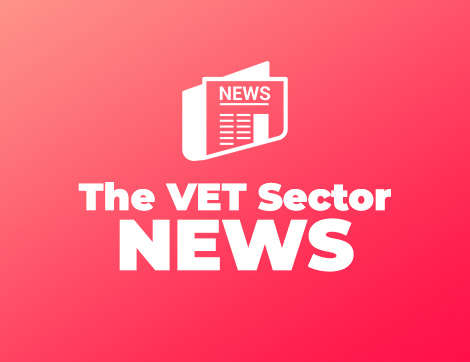
27 June, 2022
What new gov’t in Australia means for int’l education
Industry leaders and experts are looking forward to working with the new government in Australia to usher in a recovery for the international education sectors in the country. Last week, Universities Australia, Independent Tertiary Education Council Australia and Independent Higher Education Australia welcomed Jason Clare on his appointment as minister for education. Along with addressing […]
2 years ago

27 June, 2022
The VET Sector News (June 2022)
World University Rankings 2022 The Times Higher Education World University Rankings 2022 include more than 1,600 universities across 99 countries and territories, making them the largest and most diverse university rankings to date. The table is based on 13 carefully calibrated performance indicators that measure an institution’s performance across four areas: teaching, research, knowledge transfer […]
2 years ago

27 June, 2022
CAQA Recruitment – The current job vacancies
Resource writers CAQA Resources is looking for qualified instructional writers and subject matter experts to develop training materials for the community services and health services industries. If you are interested, email your resume and cover letter to info@caqarecruitment.com.au Marketing Manager This role is responsible for setting and applying the strategic direction and for the day […]
2 years ago

27 June, 2022
Online Media Solutions (OMS) Services
Over the past two decades, Online Media Solutions (OMS) has provided assistance to clients worldwide. OMS merged into the CAQA and Career Calling brands in 2013. Services offered by Online Media Solutions include: website design and development; website security; web hosting; domains marketplace; development of iOS and Android applications; software development; graphics design including logos, […]
2 years ago

27 June, 2022
CAQA Recruitment
Are you looking for staff? At CAQA Recruitment we help employers find talent for their organisation. We understand that hiring is a complex and sometimes costly process. However, it can be simplified and made easy on a budget by opting for our services. Our recruitment platform receives a huge number of interest from applicants who […]
2 years ago

27 June, 2022
CAQA Systems Services
CAQA Systems provides technology services and support, and works in partnership with its customers. We collaborate with innovative organisations and service providers, assisting them in maximising the efficiency and effectiveness of their technology investments. We specialise in network administration, software systems and development, hardware and software support, software system and development, cybersecurity, information technology-related issues […]
2 years ago

27 June, 2022
Edu Learning – Your door to professional development opportunities
We would love to have you join our professional development retainer agreement services or individual professional development opportunities through Edu Learning. Our organisation works with the aim to help you grow your skills in a fun and interactive way. The benefits of joining our organisation are numerous, from getting tips from VET experts and industry […]
2 years ago
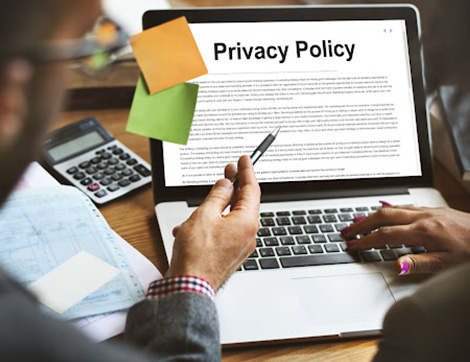
27 June, 2022
Privacy policy for your training organisation
There are strict privacy laws in Australia that cover how businesses can collect, use and disclose personal information. It is important for any training organisation to have a robust privacy policy in order to protect the personal information of their students and staff. This means having a privacy policy that sets out how you collect, […]
2 years ago

27 June, 2022
Interview with Shiv Jaidka, CA, RTO Accounts
Profile: With 14+ years of experience, specialising in providing accounting and taxation services to RTOs and VET industry, we can help you with RTO’s financial reporting and tax compliance to eliminate the stress and confusion of meeting your ATO compliance. We can help you with the cash flow budgets and forecasts to avoid nasty surprises. […]
2 years ago

27 June, 2022
Customer complaints are your opportunity to drive continuous improvement
There is no organisation that isn’t subject to complaints from time to time. In the case of Registered Training Organisations (RTOs), complaints are governed by the Standards for RTOs 2015. Standard 6 requires RTOs to have a system in place for managing complaints. While it’s obviously important to deal with complaints in a timely and […]
2 years ago
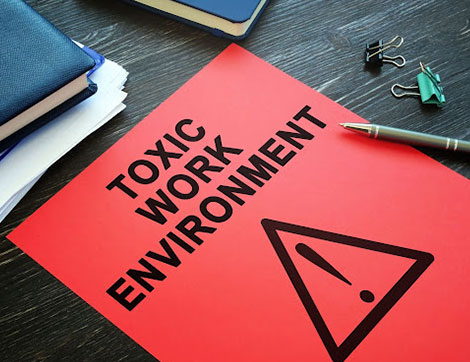
27 June, 2022
Working in a toxic workplace can lead to serious health problems.
It’s no secret that working in a toxic work environment can have serious consequences for your health. From anxiety and depression to physical health problems, the effects of a toxic workplace can be far-reaching and devastating. When talking about a “toxic work environment”, what comes to mind for most people are things like office politics, […]
2 years ago

27 June, 2022
Australia has the world’s second-worst skills crisis.
According to a new analysis, businesses in Australia are in the midst of a skills crisis, and the country ranks second-worst among industrialised and developed nations for its lack of trained skilled workers. This places Australia in the middle of a skills crisis. As of the end of the March quarter, roughly three per cent […]
2 years ago
27 June, 2022
The students deserve to be treated as more than just a revenue stream
It is no secret that the cost of living in Australia is high. This is especially true for students, who often have to take on part-time jobs in addition to their studies just to make ends meet. Unfortunately, this means that they are often treated as nothing more than a revenue stream by both the […]
2 years ago

27 June, 2022
Set boundaries, establish guidelines, and work within them.
Organisations providing training services have a responsibility to ensure that their activities are carried out in a manner that is compliant with the expectations of the relevant regulatory bodies. This includes setting boundaries and establishing guidelines for staff and clients. As a training organisation, it’s important to set boundaries and establish guidelines. This will help […]
2 years ago

27 June, 2022
Check yourself before you wreck yourself.
When it comes to compliance, it’s always better to be proactive than reactive. That’s why training organisations need to conduct regular internal audits in order to ensure that their practices are up to par. By doing so, they can avoid the potential consequences of non-compliance, which can include hefty fines and damage to their reputation. […]
2 years ago

27 June, 2022
Why does the regulatory legislation change frequently?
As a training organisation in Australia, it is important to stay up-to-date with the latest changes in regulatory legislation. This is because the regulatory environment in Australia is constantly changing, and new legislative requirements are introduced on a regular basis. The rapidly changing regulatory landscape for training organisations in Australia can be attributed to a […]
2 years ago

27 June, 2022
Message from the CEO (27 June 2022)
Message from the CEO The VET Sector is an online magazine and newsletter that is dedicated to providing information, resources, and articles for all stakeholders of Registered Training Organisations (RTOs). In each edition, we cover topics that are relevant and important to RTOs, such as compliance, resources, and best practices. Our goal is to provide […]
2 years ago

17 July, 2022
The VET Sector News (July 2022)
Leadership and personal finance are the focus of TROY’s two free online classes this summer Whether you’re interested in building valuable leadership skills to propel your career or are interested in learning principles to protect and grow your wealth, Troy University is ready to help those who want to make a commitment to their future […]
2 years ago

17 July, 2022
CAQA Recruitment – The current job vacancies
Resource writers CAQA Resources is looking for qualified instructional writers and subject matter experts to develop training materials for the community services and health services industries. If you are interested, email your resume and cover letter to info@caqarecruitment.com.au Marketing Manager This role is responsible for setting and applying the strategic direction and for the day […]
2 years ago

17 July, 2022
Online Media Solutions (OMS) Services
Over the past two decades, Online Media Solutions (OMS) has provided assistance to clients worldwide. OMS merged into the CAQA and Career Calling brands in 2013. Services offered by Online Media Solutions include: website design and development; website security; web hosting; domains marketplace; development of iOS and Android applications; software development; graphics design including logos, […]
2 years ago

17 July, 2022
CAQA Recruitment
Are you looking for staff? At CAQA Recruitment we help employers find talent for their organisation. We understand that hiring is a complex and sometimes costly process. However, it can be simplified and made easy on a budget by opting for our services. Our recruitment platform receives a huge number of interest from applicants who […]
2 years ago

17 July, 2022
CAQA Systems Services
CAQA Systems provides technology services and support, and works in partnership with its customers. We collaborate with innovative organisations and service providers, assisting them in maximising the efficiency and effectiveness of their technology investments. We specialise in network administration, software systems and development, hardware and software support, software system and development, cybersecurity, information technology-related issues […]
2 years ago

17 July, 2022
Edu Learning – Your door to professional development opportunities
We would love to have you join our professional development retainer agreement services or individual professional development opportunities through Edu Learning. Our organisation works with the aim to help you grow your skills in a fun and interactive way. The benefits of joining our organisation are numerous, from getting tips from VET experts and industry […]
2 years ago
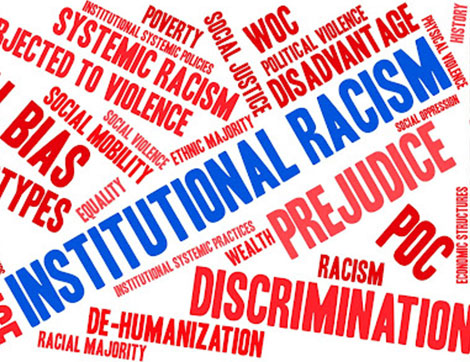
17 July, 2022
Reducing trauma and structural racism
Organisations that provide training and support to communities of colour can play a critical role in reducing trauma and structural racism. By ensuring that their staff are trained in trauma-informed care and culturally responsive practices, these organisations can help to create more equitable and supportive environments for all. It’s no secret that the world of […]
2 years ago

17 July, 2022
Let’s focus on what we can control.
Let’s focus on what we can control when working in a training organisation. When working in a training organisation, it is important to focus on what we can control. There are a number of things that we can’t control, such as the weather or the economy. However, there are many things that we can control, […]
2 years ago
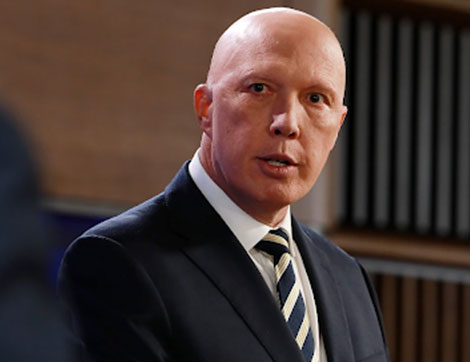
17 July, 2022
In an effort to reform education, Peter Dutton calls for change
Peter Dutton, the Opposition Leader has called for a change to the way the national policy framework for training and education is developed, monitored, and implemented to reform Australia’s education system. Mr Dutton said at a press conference that unions and activists are driving the current system, which negatively impacts the learning of students. According […]
2 years ago
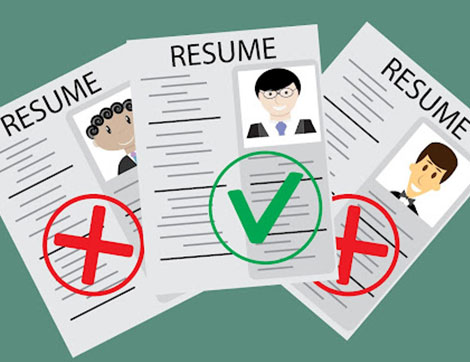
17 July, 2022
Top ten resume success factors – An article from Career Calling Jobs and CAQA Recruitment
A resume should be a tool to show employers what you have accomplished and what you can bring to the table. It is not a list of everything you have ever done. When it comes to resumes, quality trumps quantity. Here are the top ten factors that will make your resume successful: 1. A well-written, […]
2 years ago

17 July, 2022
Why are a number of training organisations not successful
There are a number of reasons why training organisations may not be successful. One reason may be that the organisation does not have a clear focus or goals. Without a clear focus, it can be difficult to develop and implement effective training programs. The second reason may be that they are not able to keep […]
2 years ago

17 July, 2022
What you need to know about sustaining your ed-tech startup after the pandemic
The COVID-19 pandemic has been a game-changer for the ed-tech industry. The sector has seen a dramatic increase in demand for its products and services as schools and universities move to online learning models. However, the pandemic has also created challenges for ed-tech start-ups, who are facing pressure to scale up their operations quickly and […]
2 years ago

17 July, 2022
Message from the CEO (17 July 2022)
Message from the CEO A training sector magazine and newsletter, The VET Sector, features articles, resources, and information for all stakeholders of Registered Training Organisations (RTOs). We cover relevant and important topics to RTOs, such as compliance, resources, and best practices. RTOs will find valuable information here that will help them improve their operations and […]
2 years ago
Archives
- July 2022
- June 2022
- May 2022
- April 2022
- March 2022
- February 2022
- January 2022
- December 2021
- November 2021
- October 2021
- September 2021
- August 2021
- July 2021
- June 2021
- May 2021
- April 2021
- March 2021
- December 2020
- November 2020
- May 2020
- February 2020
- December 2019
- November 2019
- October 2019
- September 2019
- August 2019
- July 2019
- May 2019
- April 2019
- March 2019
- December 2018
- November 2018
- October 2018
- September 2018
- August 2018
- July 2018
- June 2018
- May 2018
- November 2016
- October 2016

Sukh Sandhu
Chief Executive Officer
Sukh has been working in the VET and Higher Education Industry for over 20 years. In this time, he has held several roles with RTO’s including CEO roles for International Colleges and National Compliance and Quality Assurance Manager roles for several RTO’s, TAFE’s and Universities. Sukh has also worked for ASQA as a Business Systems Project Official.
Sukh has had extensive project management experience in risk management, compliance, administration and as a training consultant. He has extensive knowledge in government compliance standards and has participated in nearly one hundred audits across Australia and provided consultancy advice regarding ASQA/VRQA, TEQSA, ACPET, DET-HESG, VQF/Higher Education, ELICOS, NEAS, ANMAC, AHPRA, CRICOS, ESOS and ISO.
Sukh is a member of several independent professional organisations and government bodies including, ACPET, VELG, ACS, AITD, MARA, MIA, ISANA, APEX, IEEE, The Internet Society (Global Member), AISIP, IAMOT, ACM, OISV, APACALL, IWA, Eta Kappa Nu, EDSIG and several others.

 Enrol Now
Enrol Now Info Pack
Info Pack










